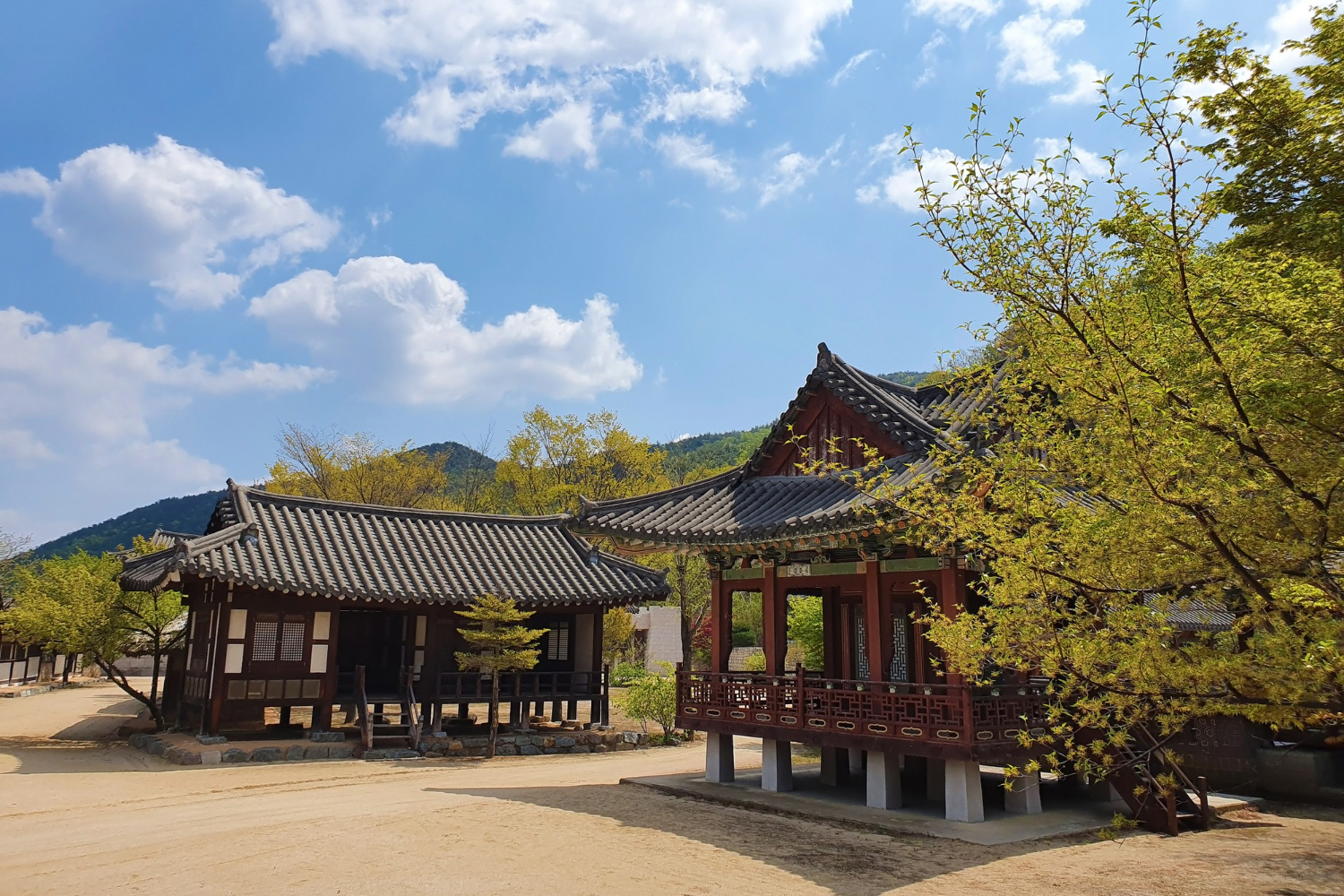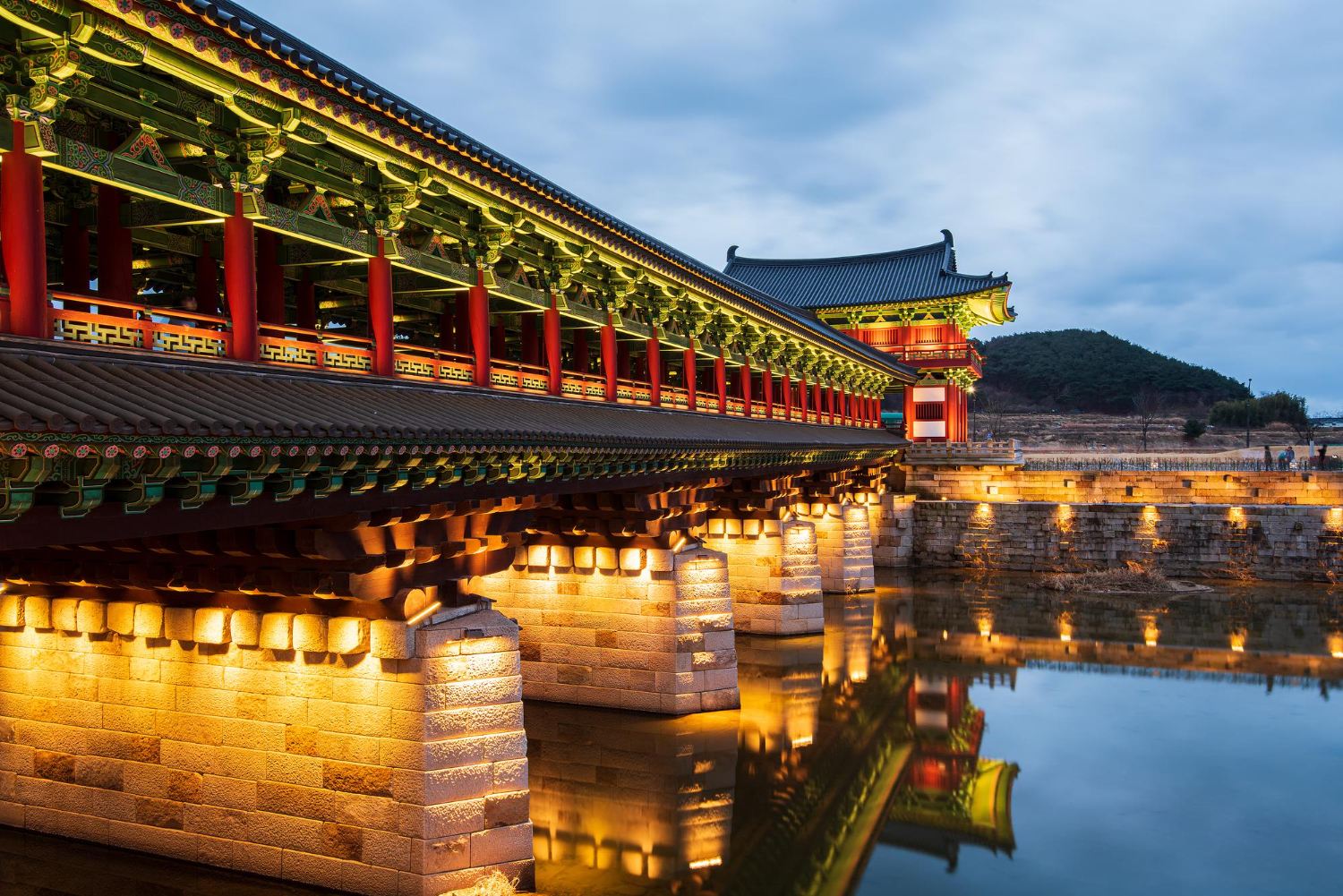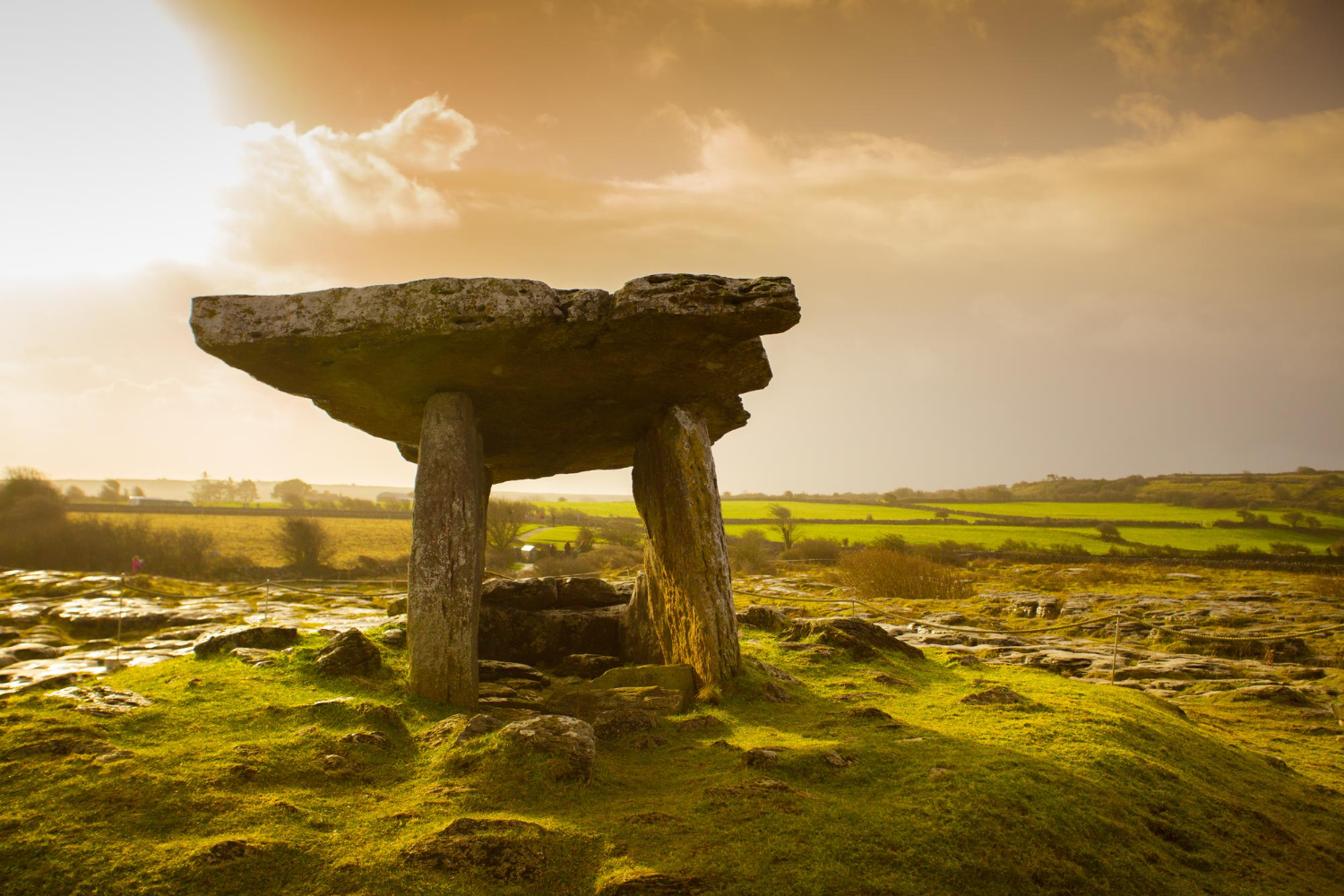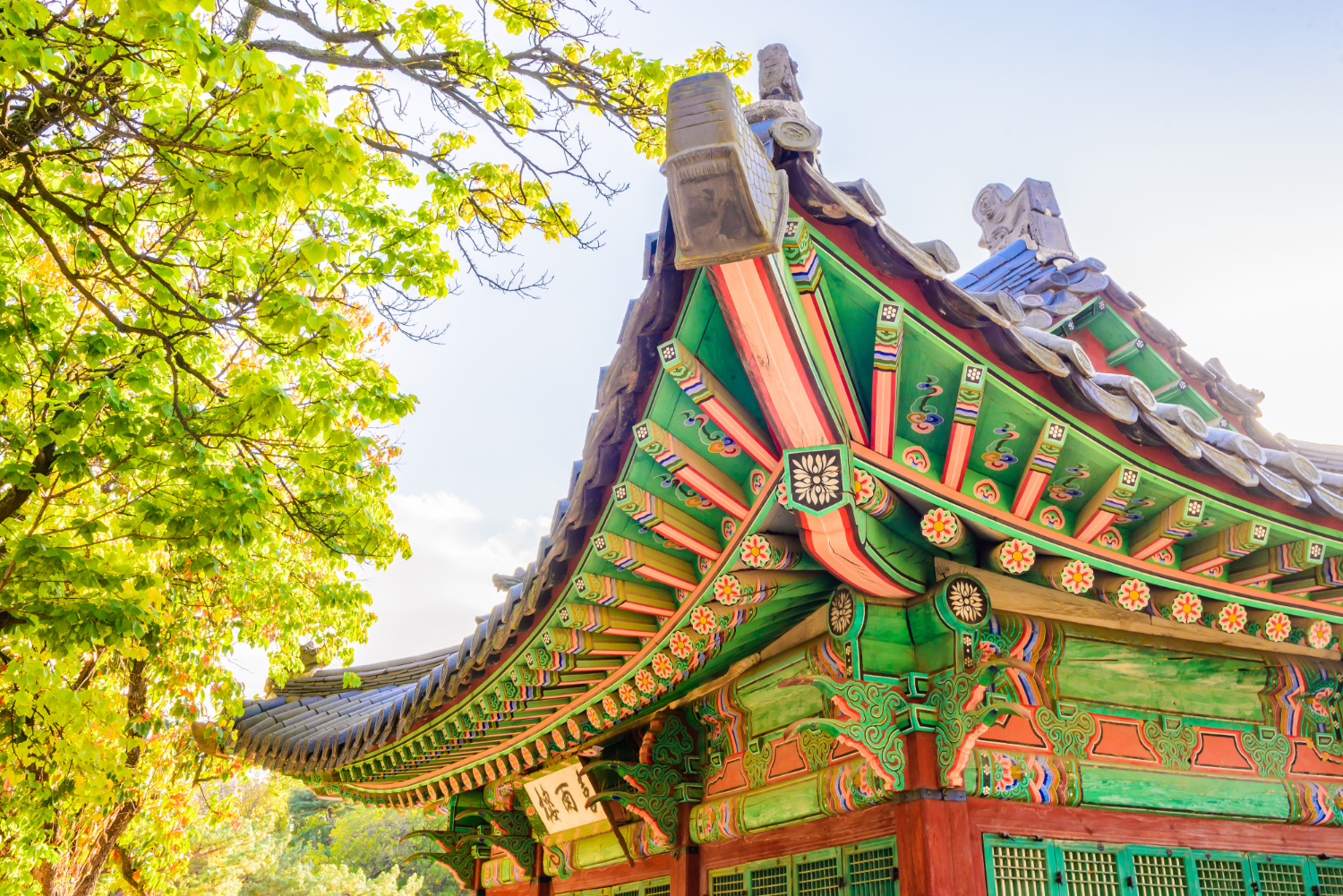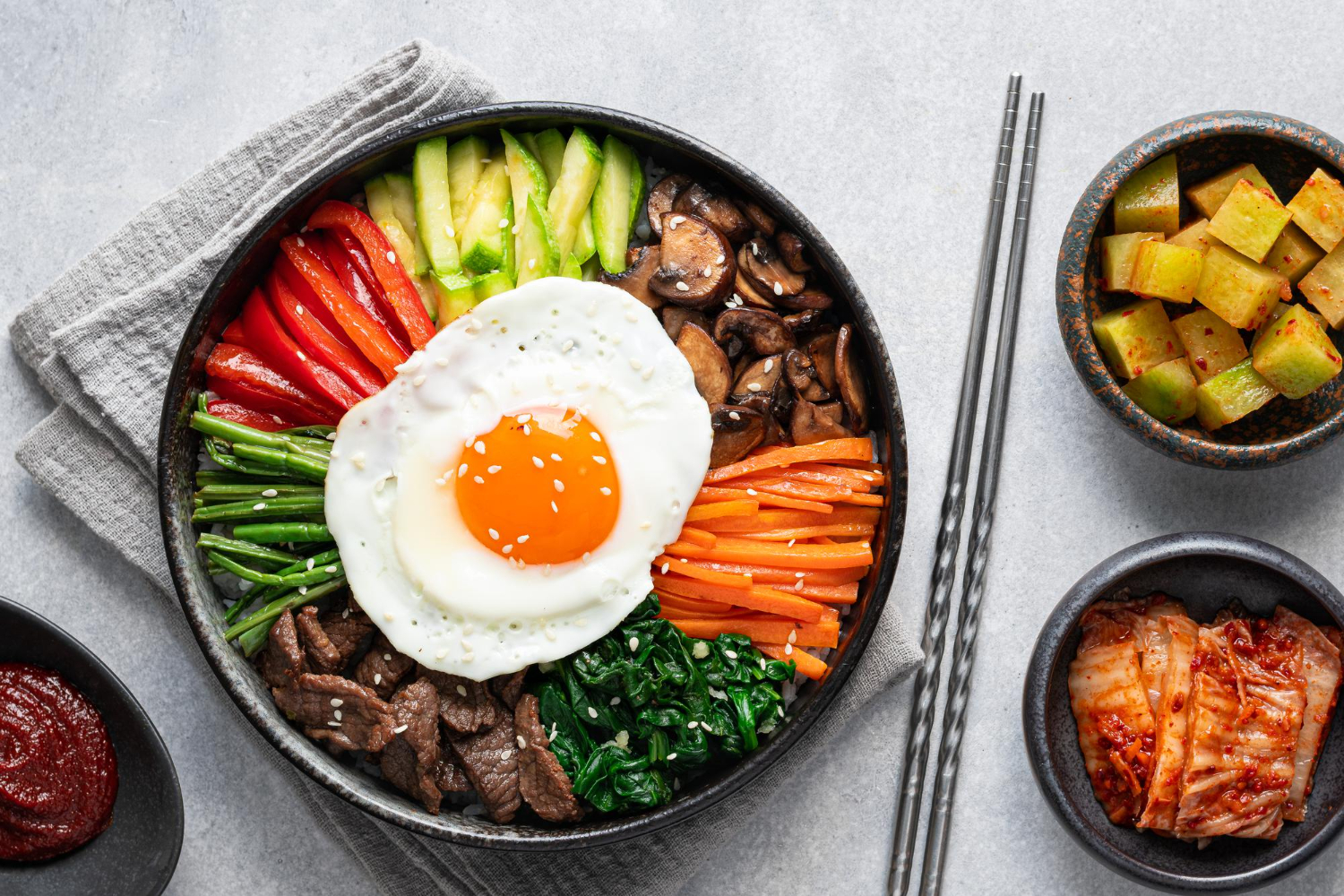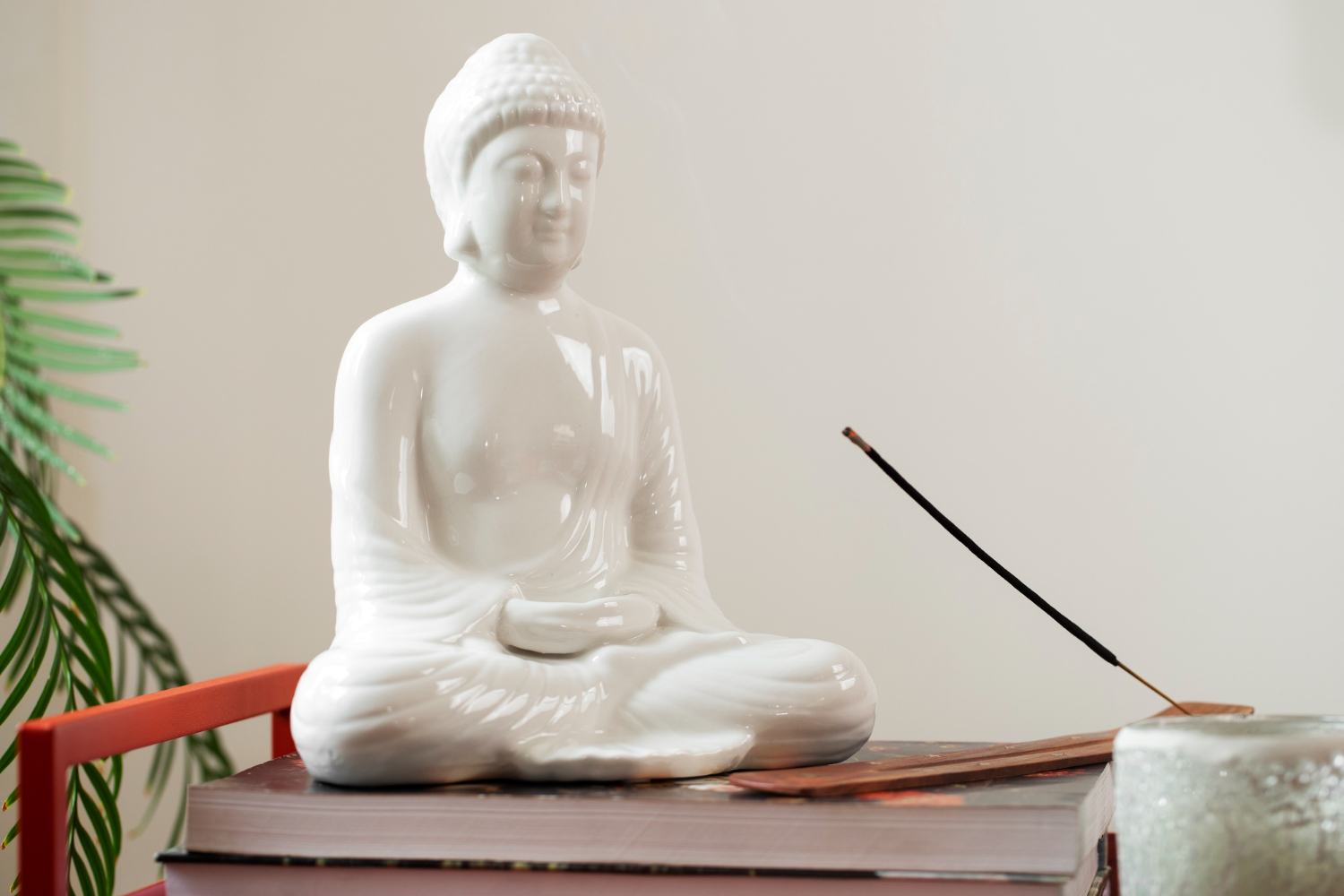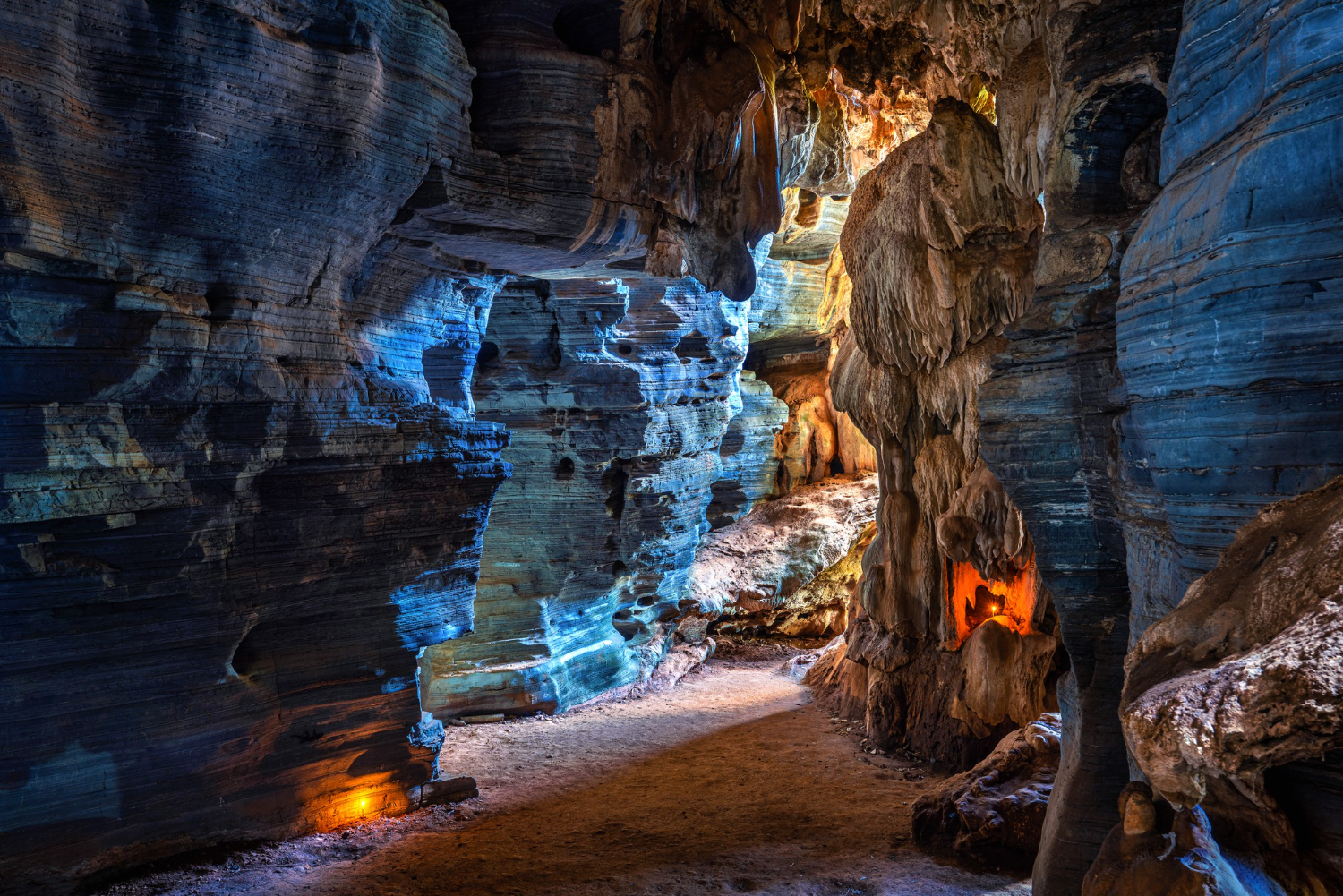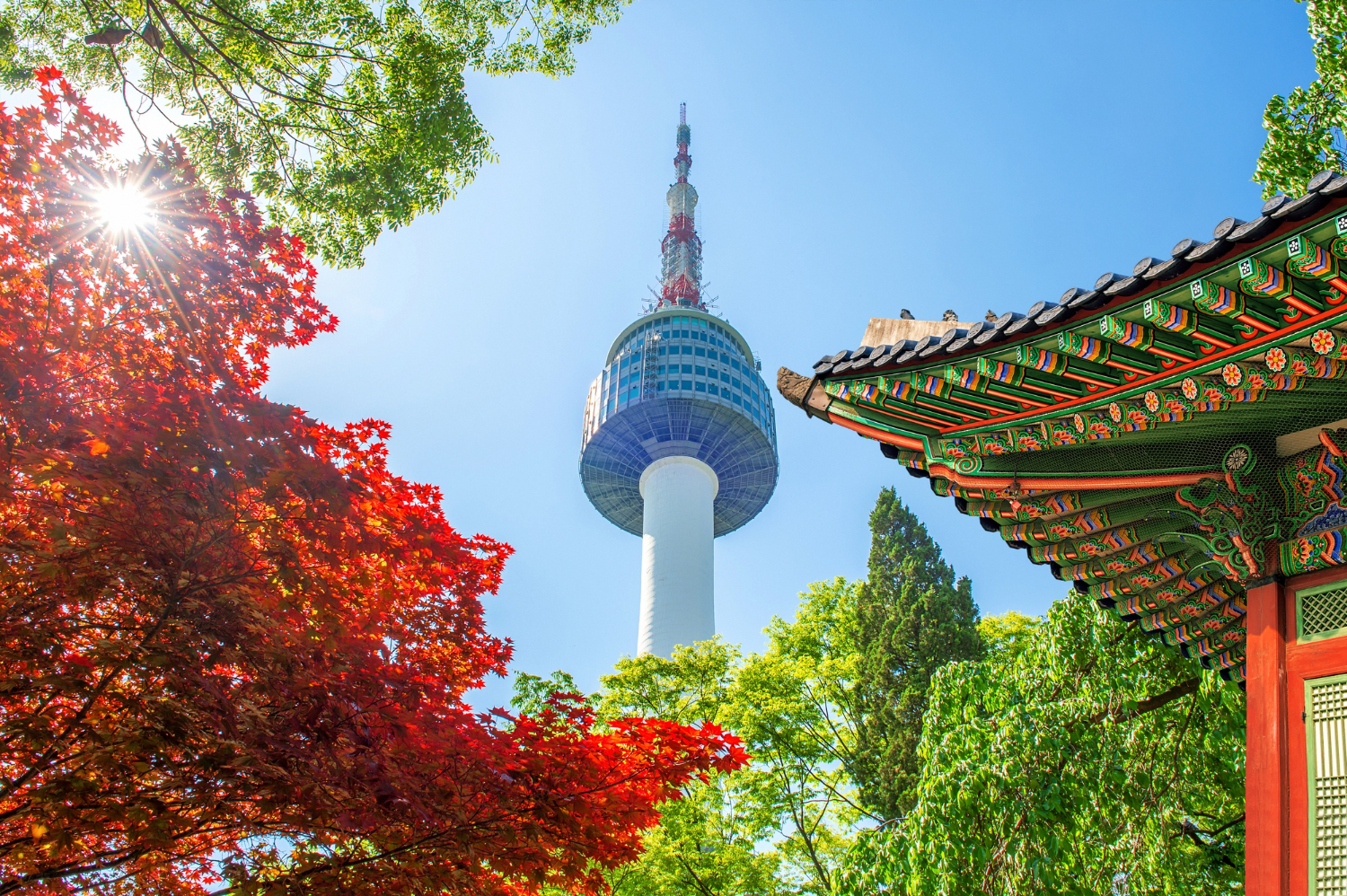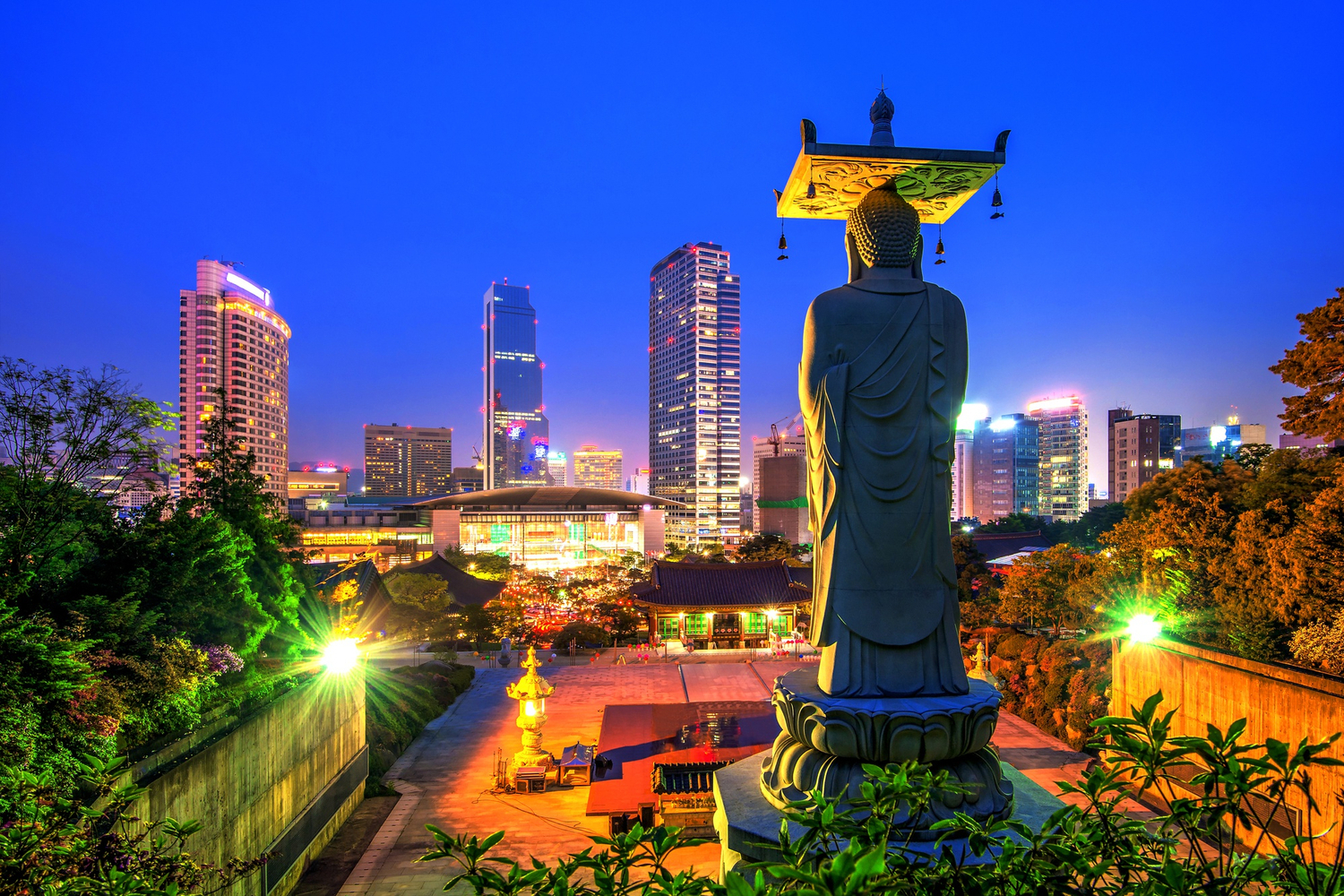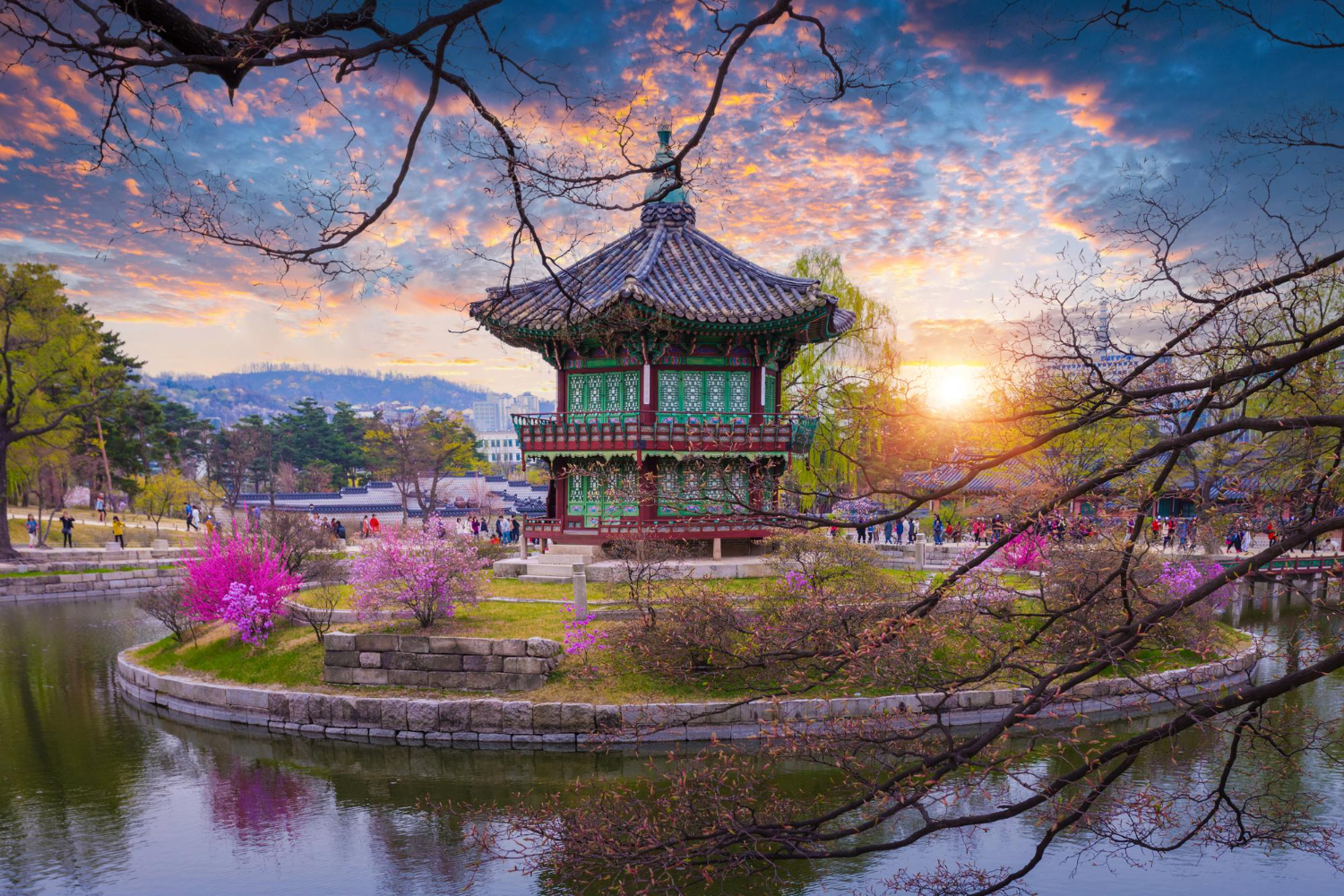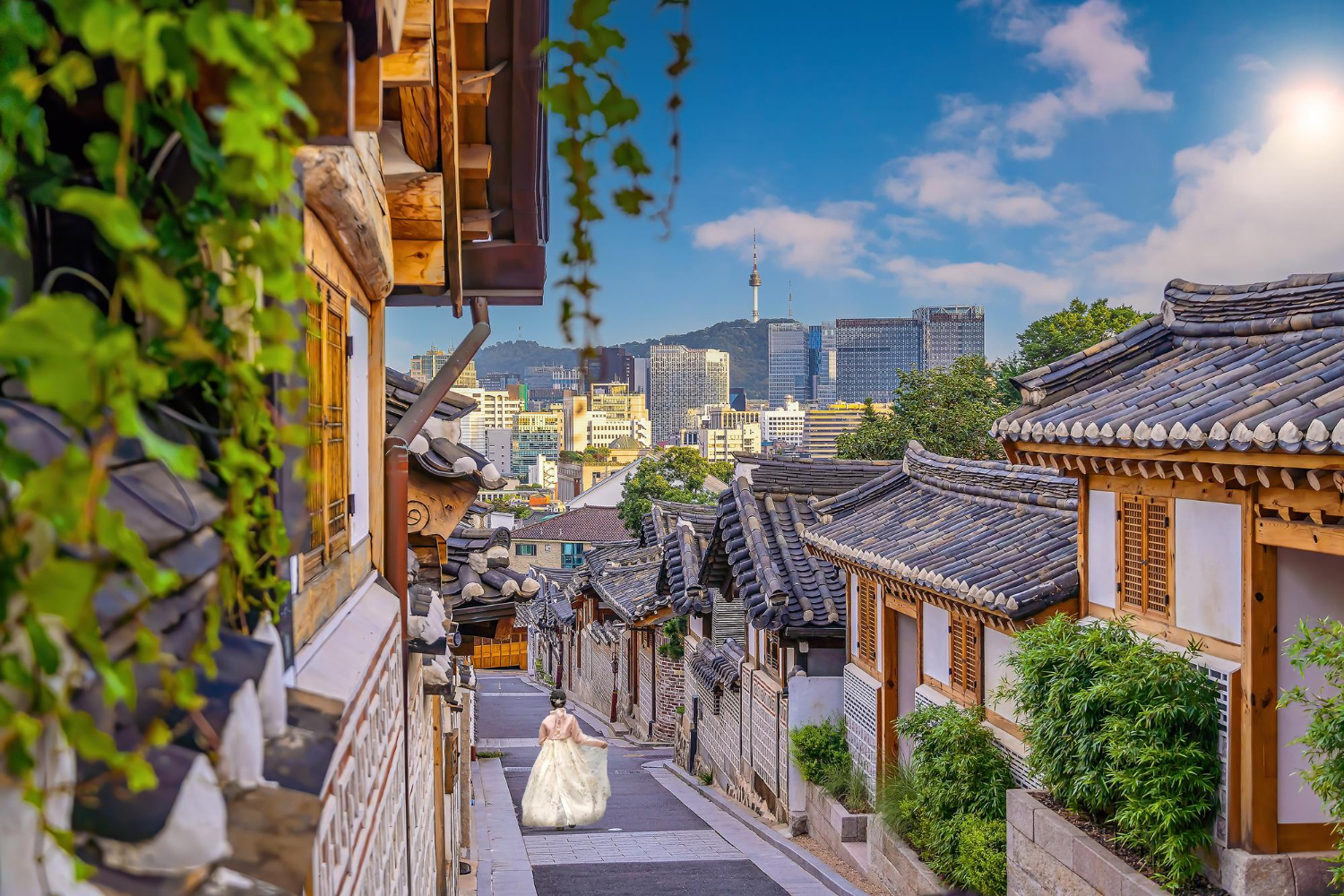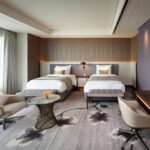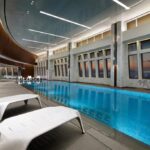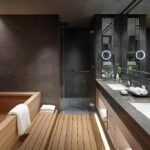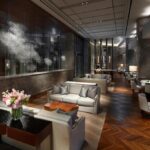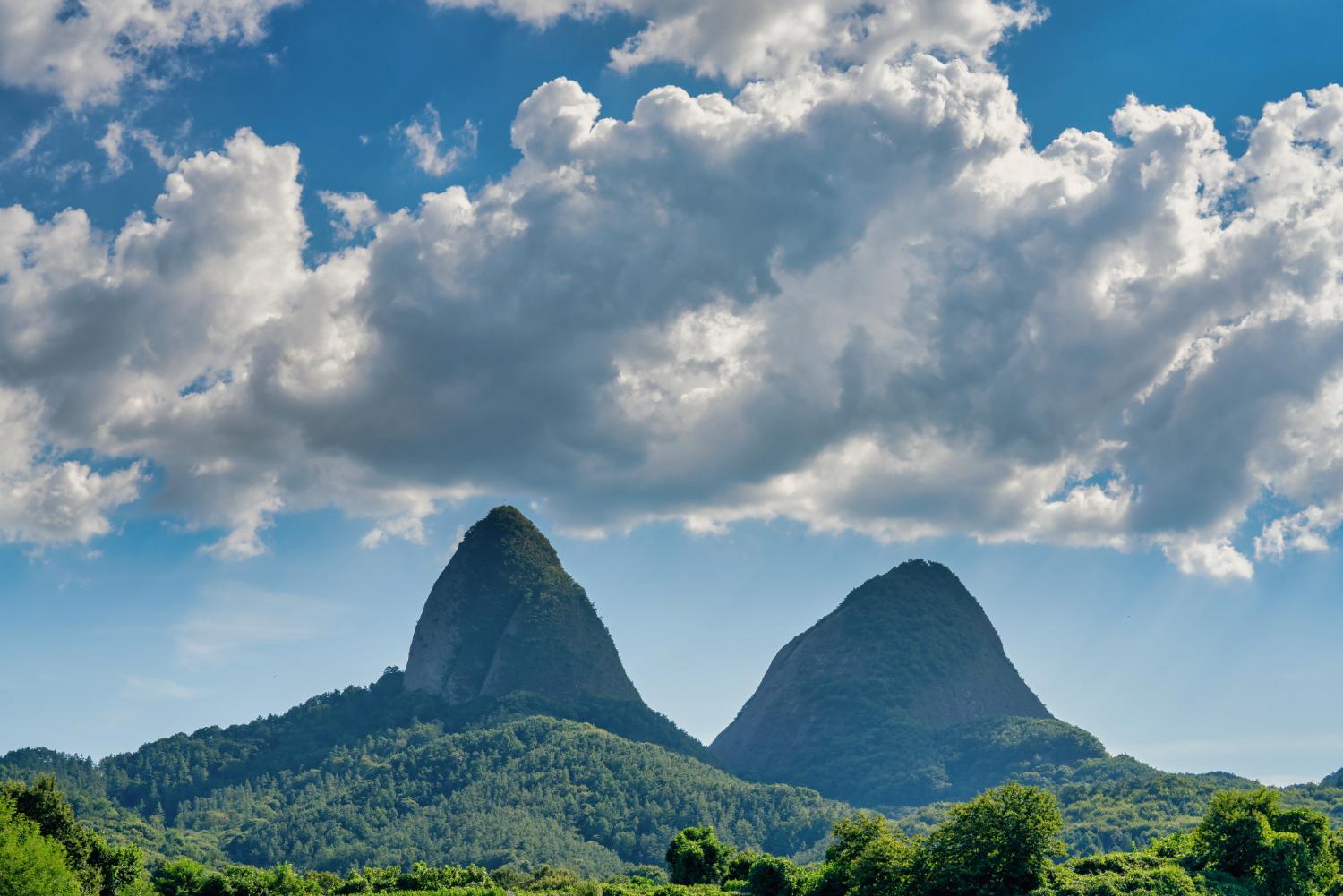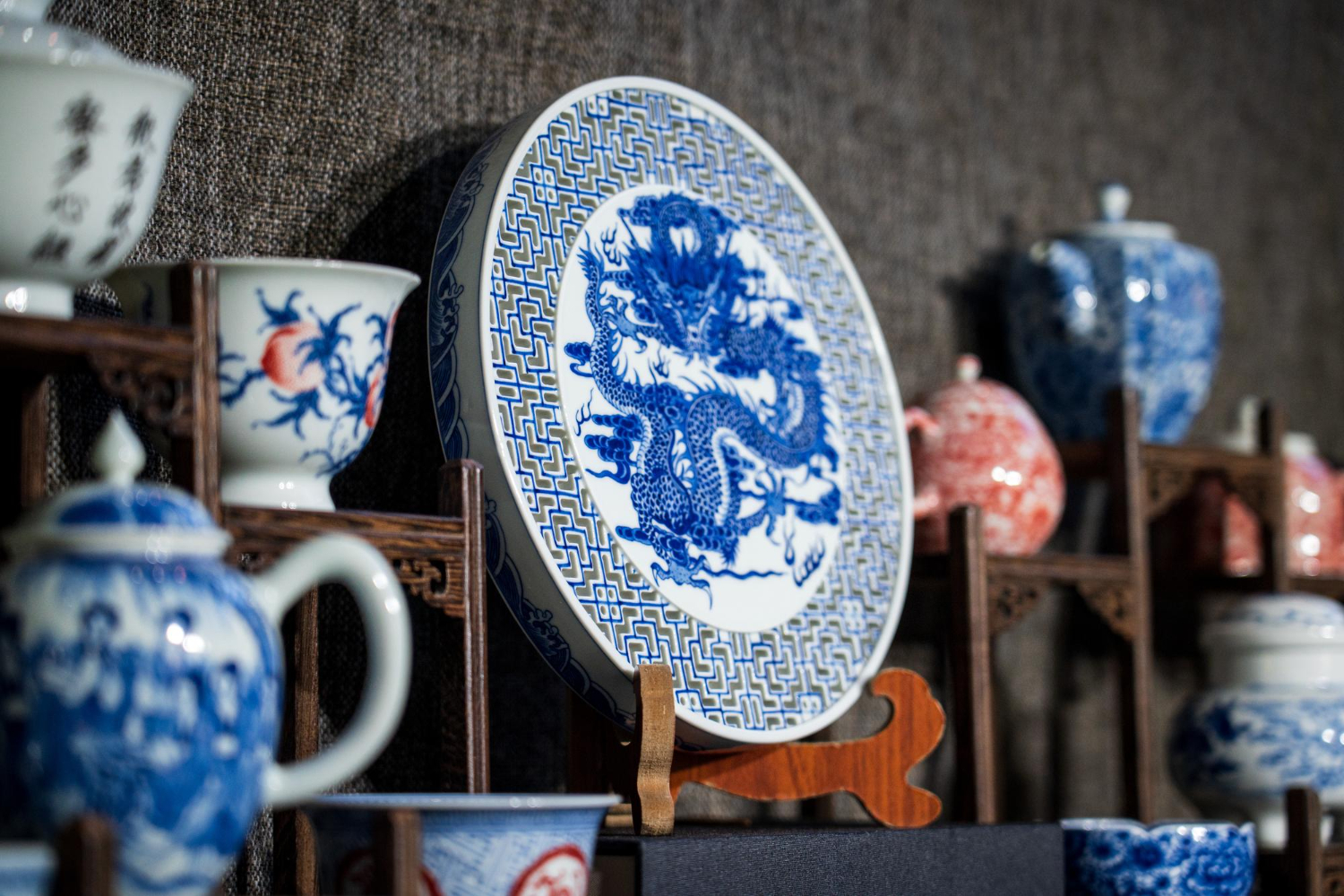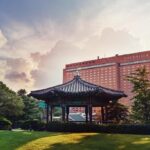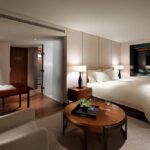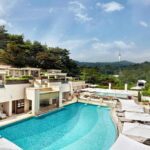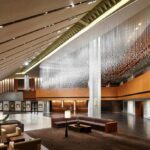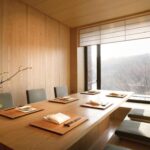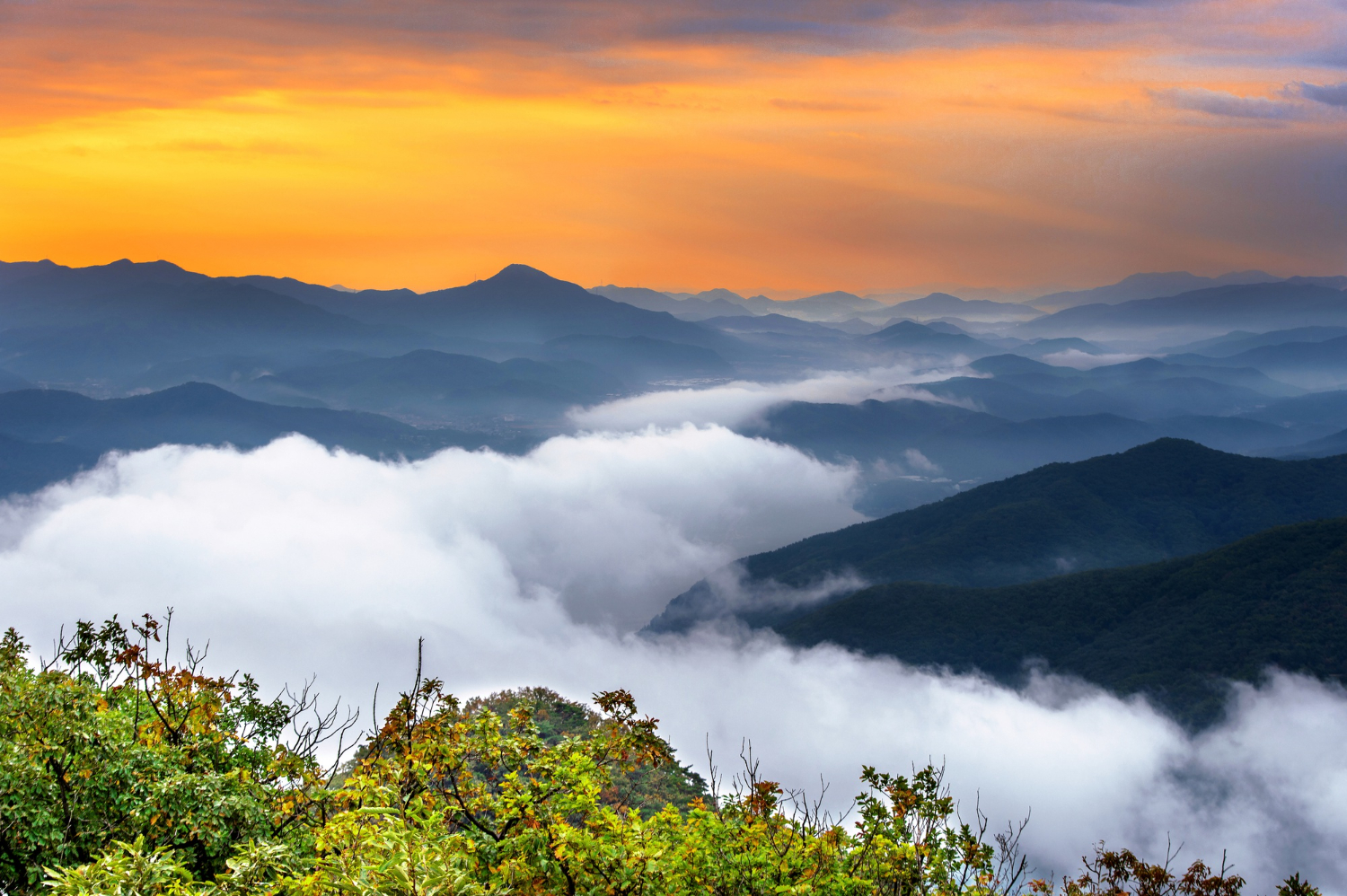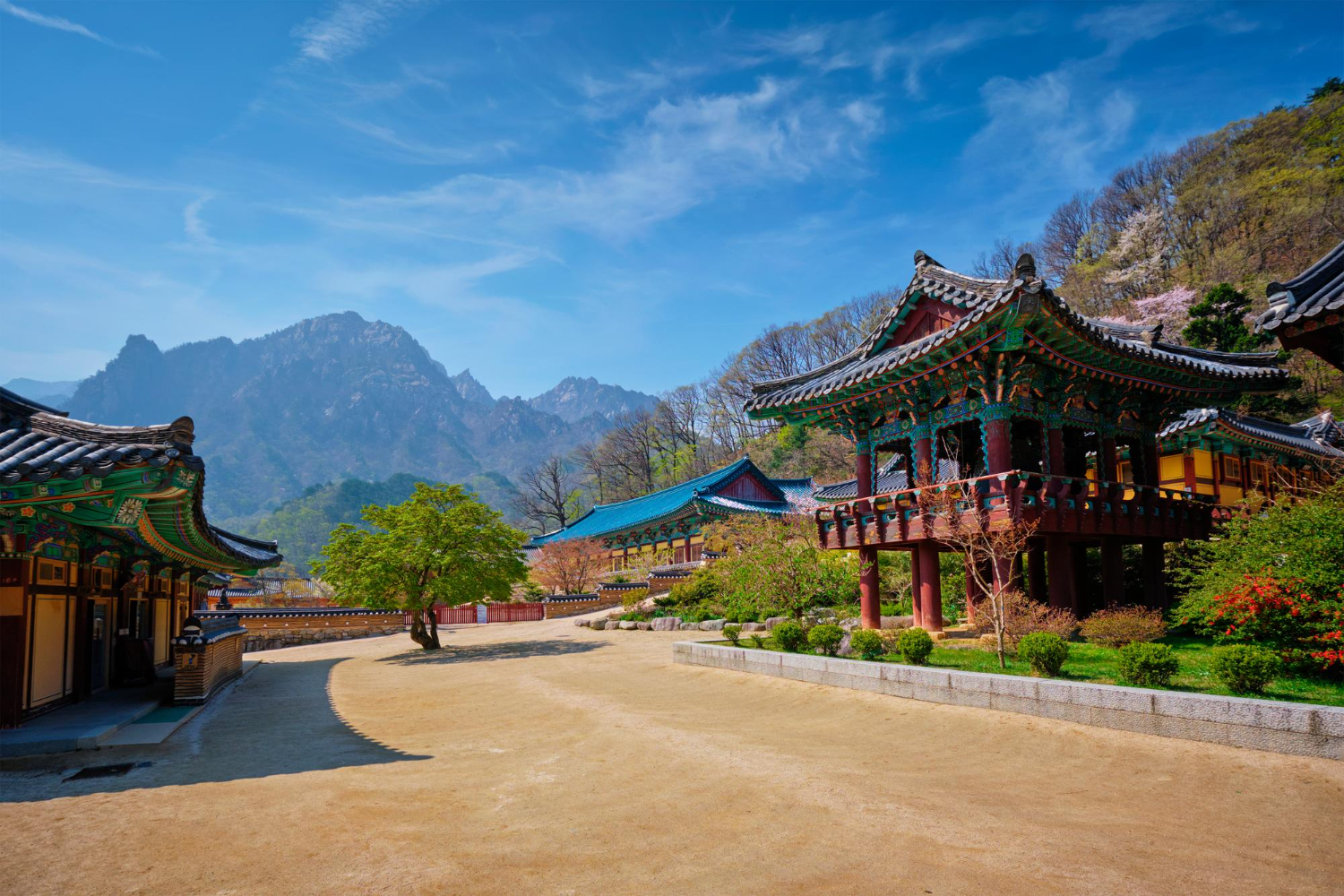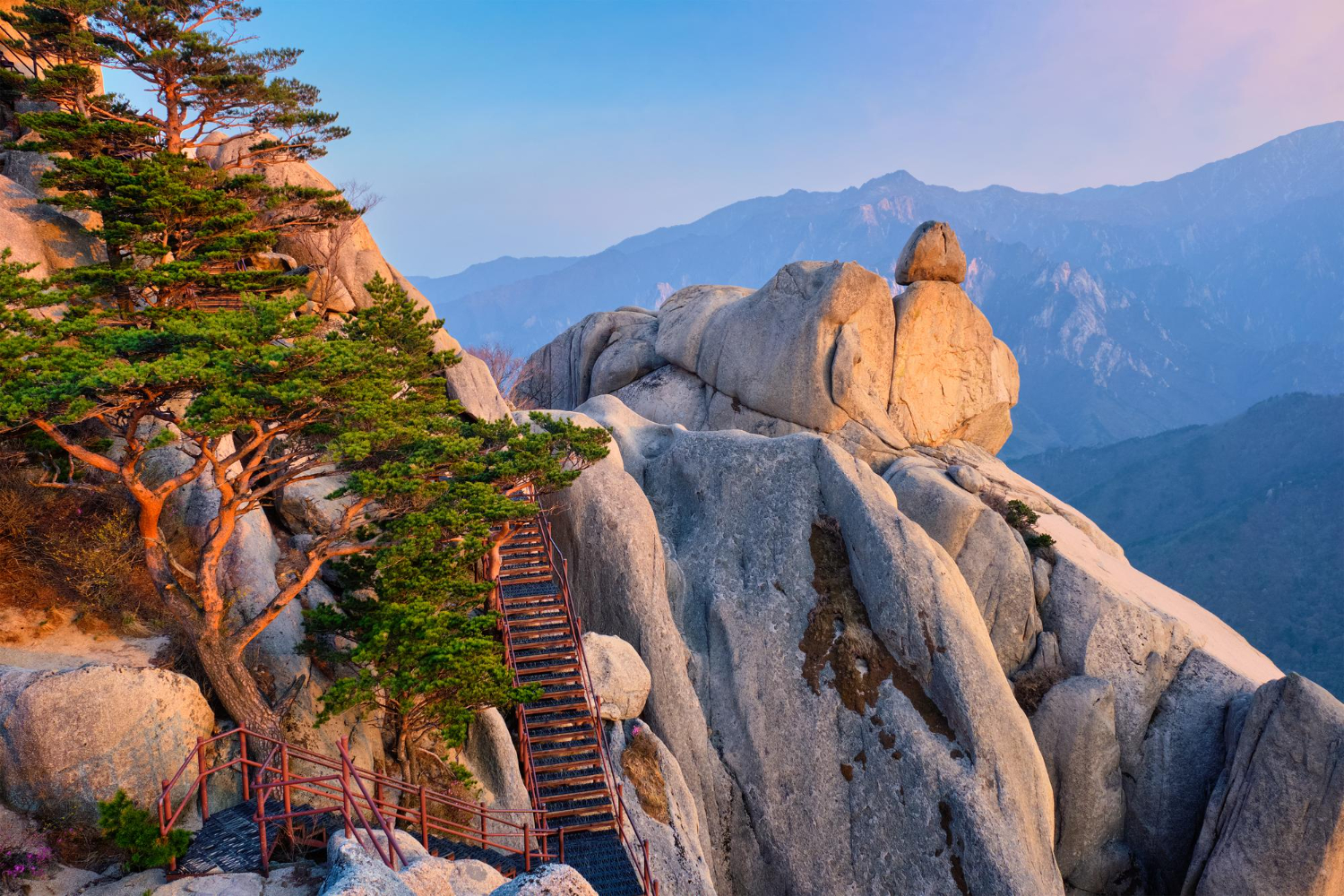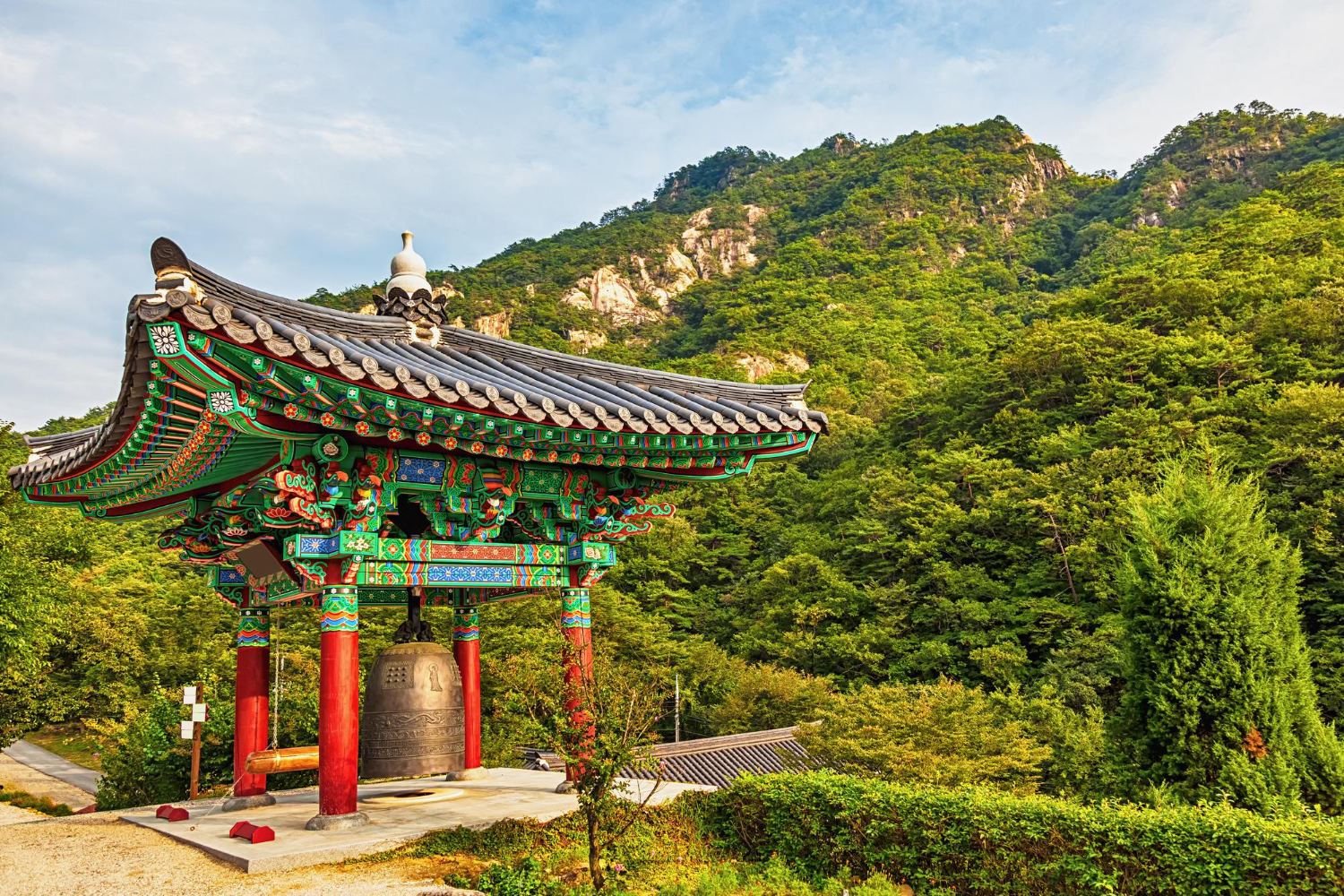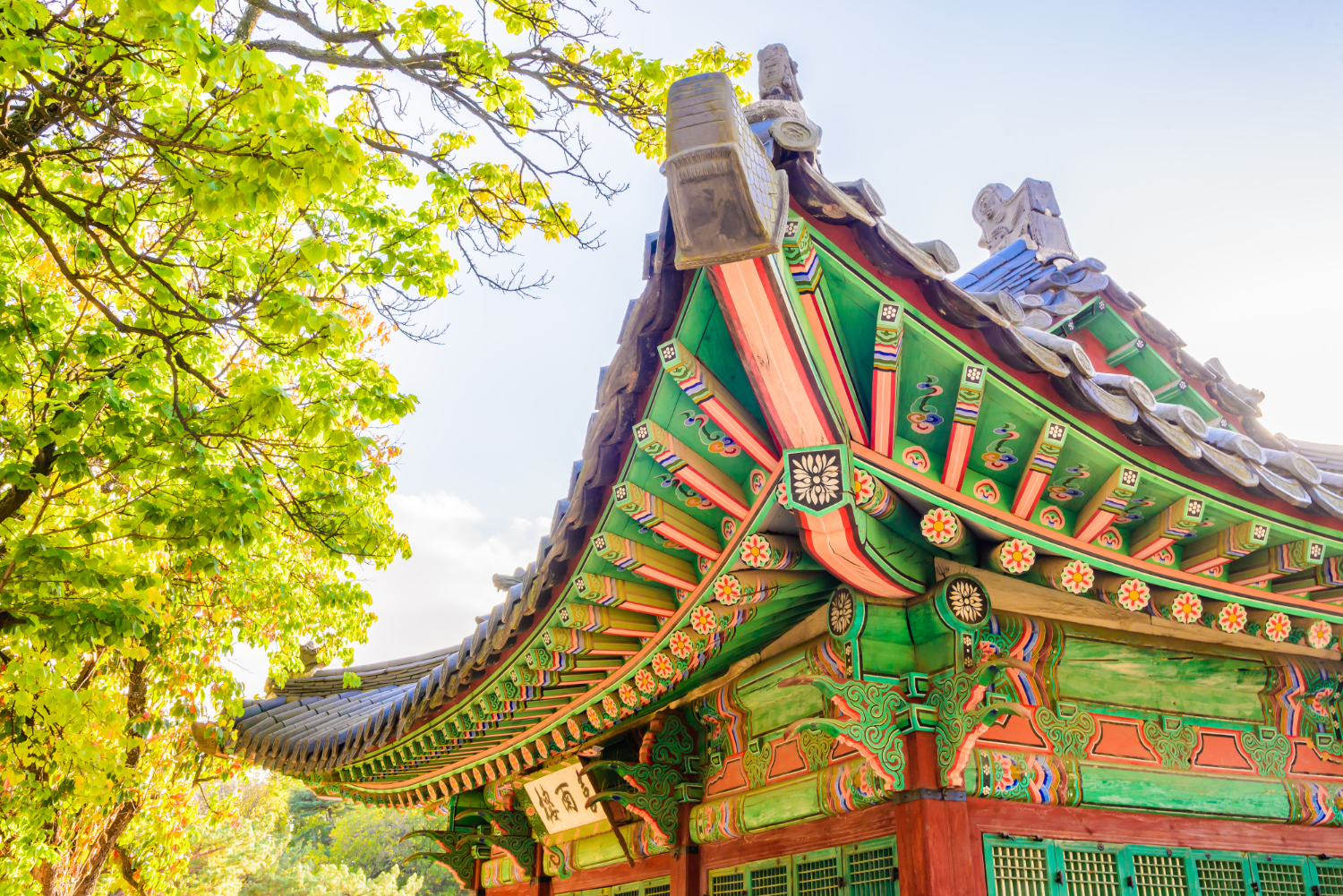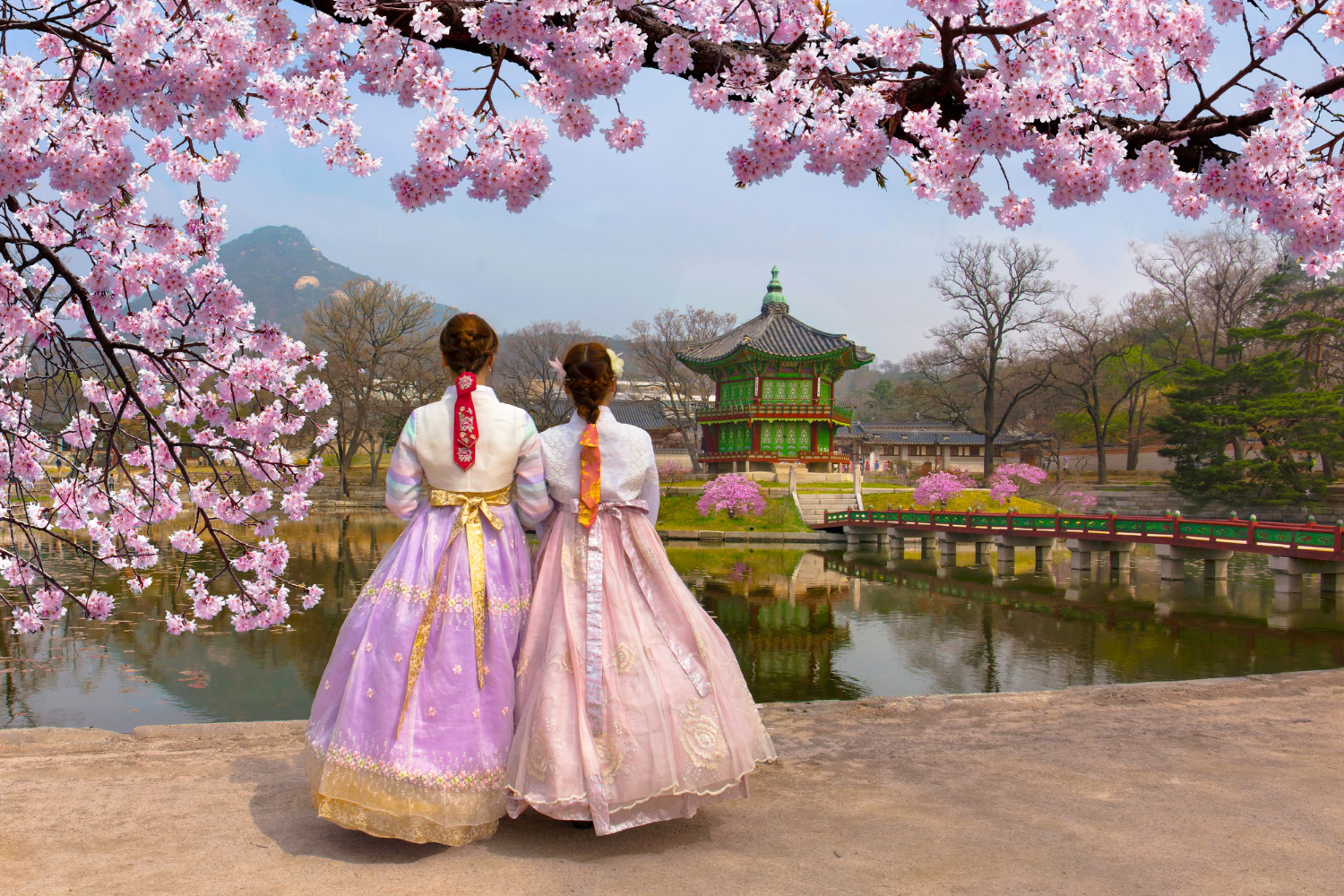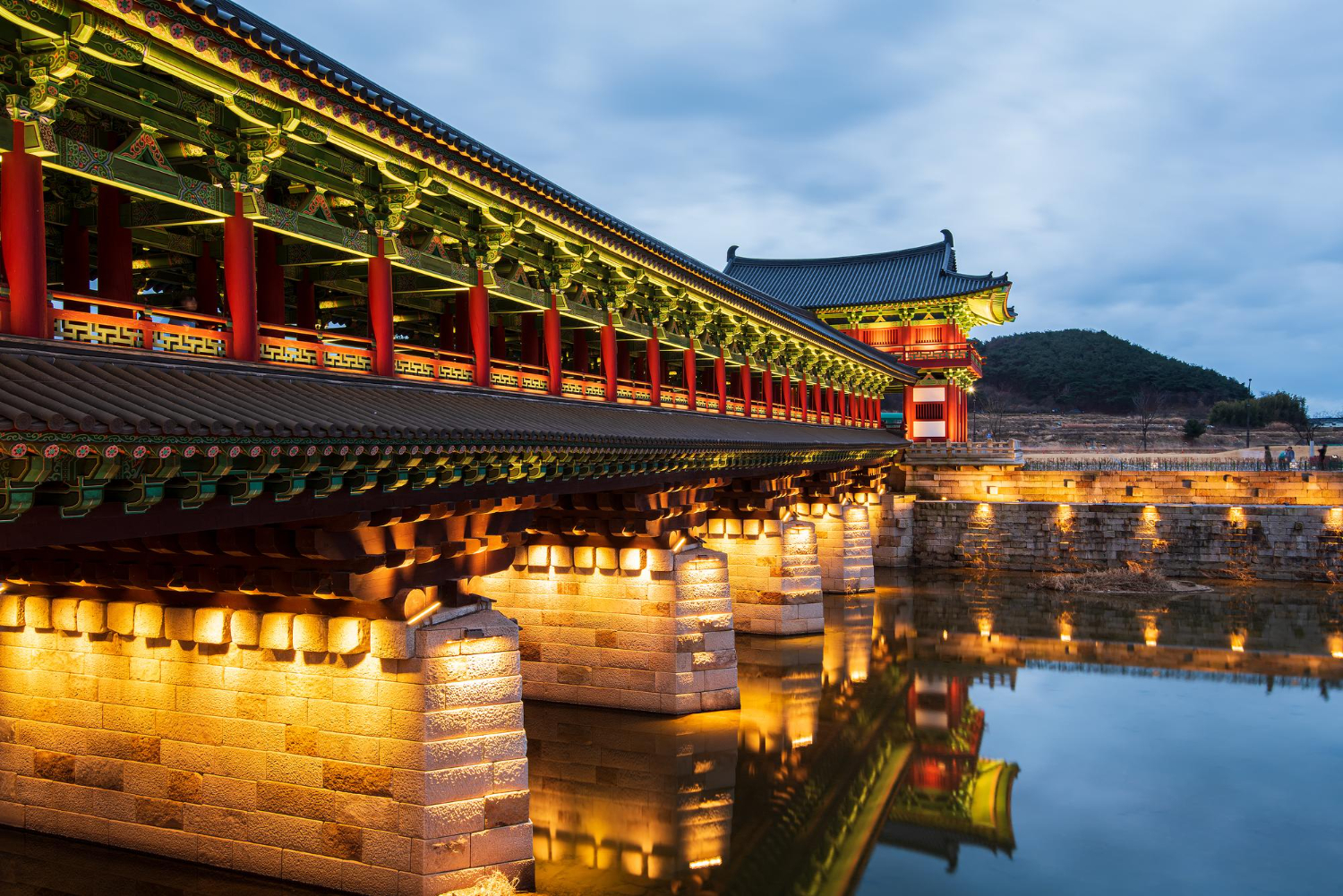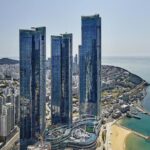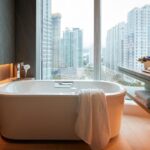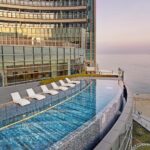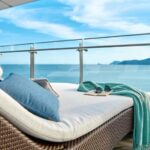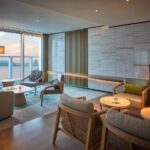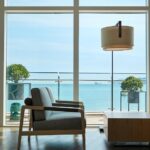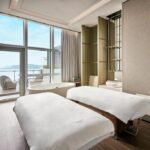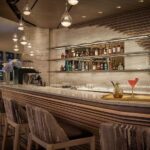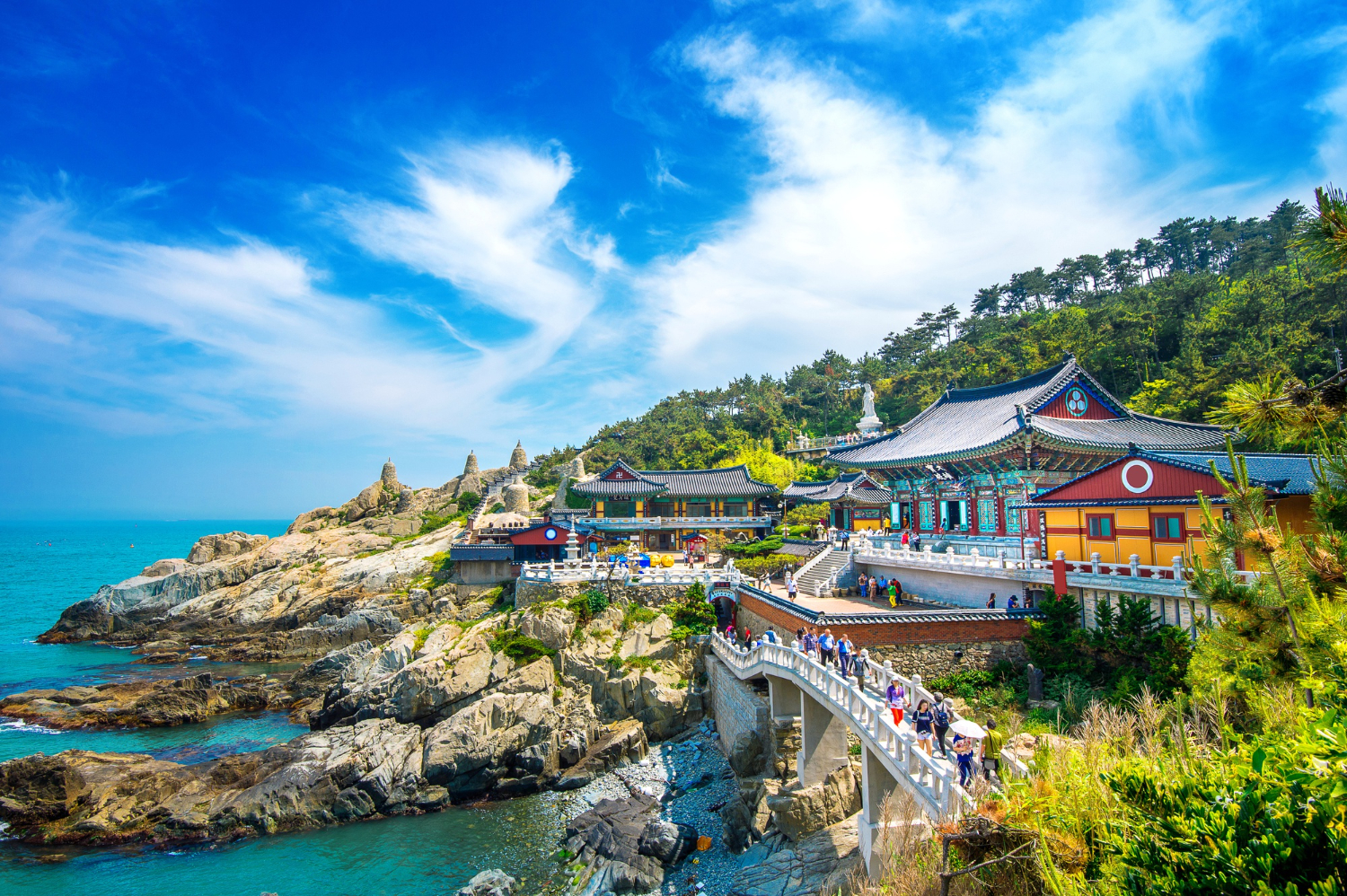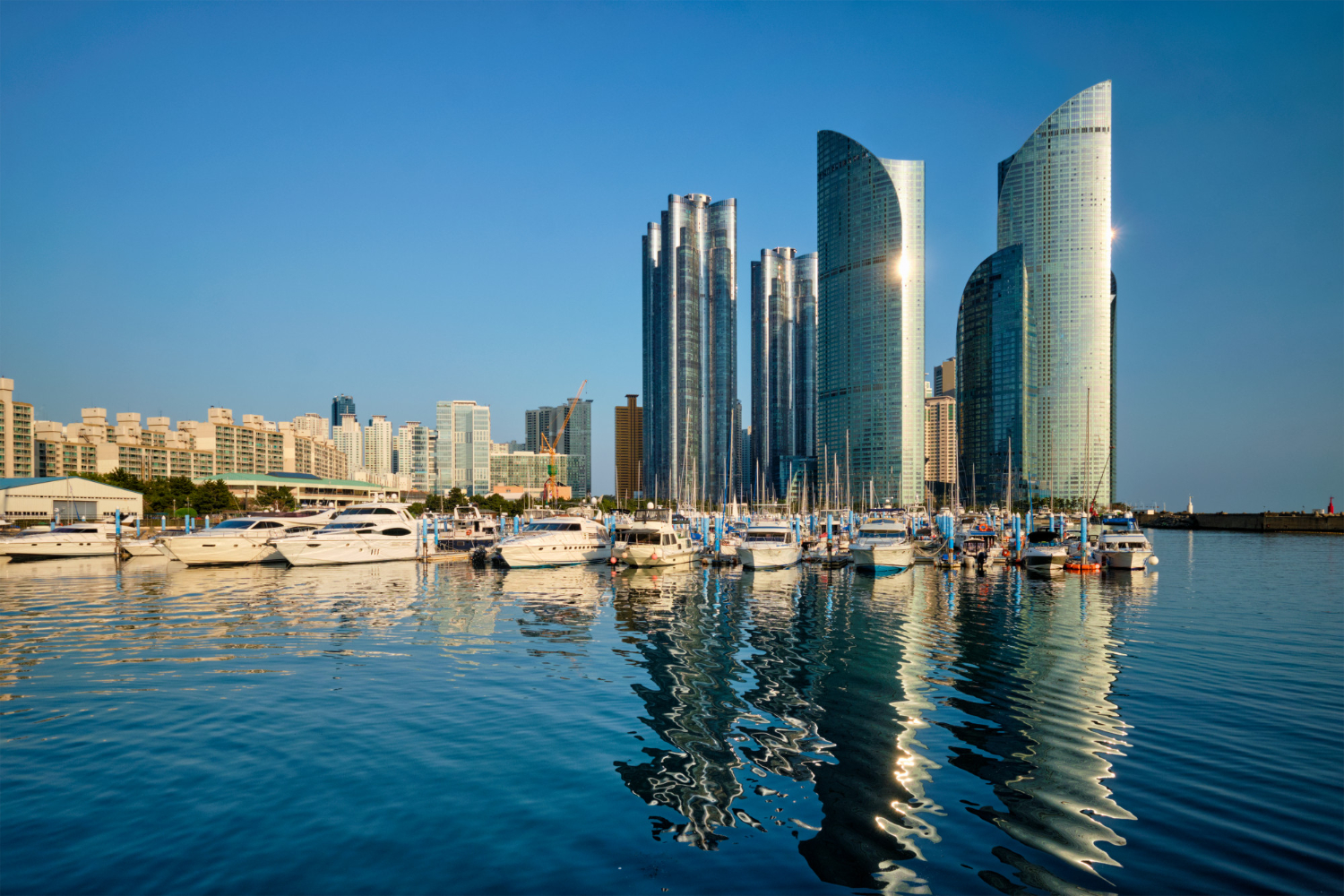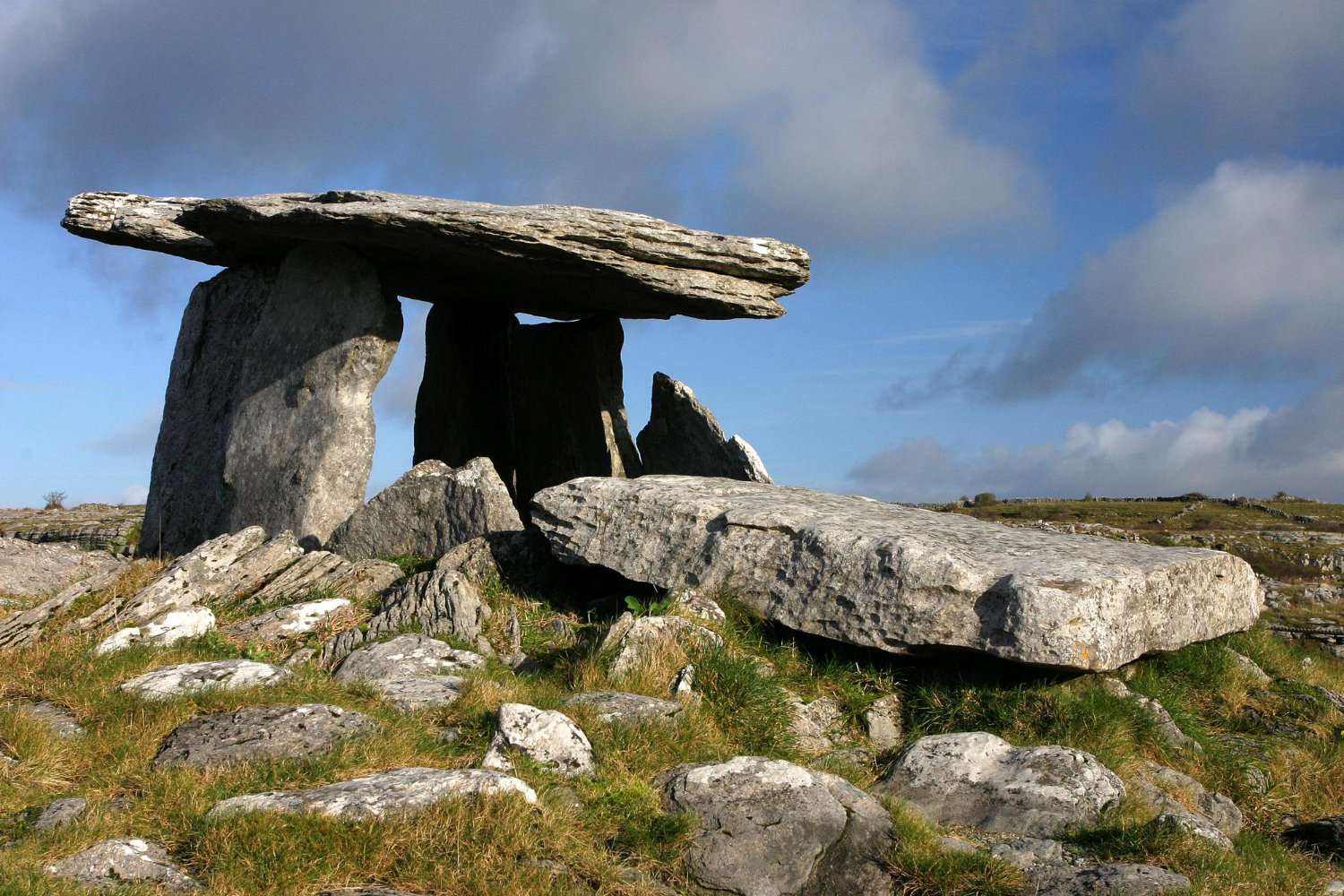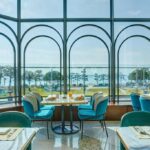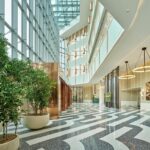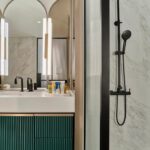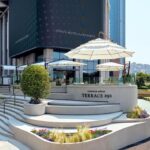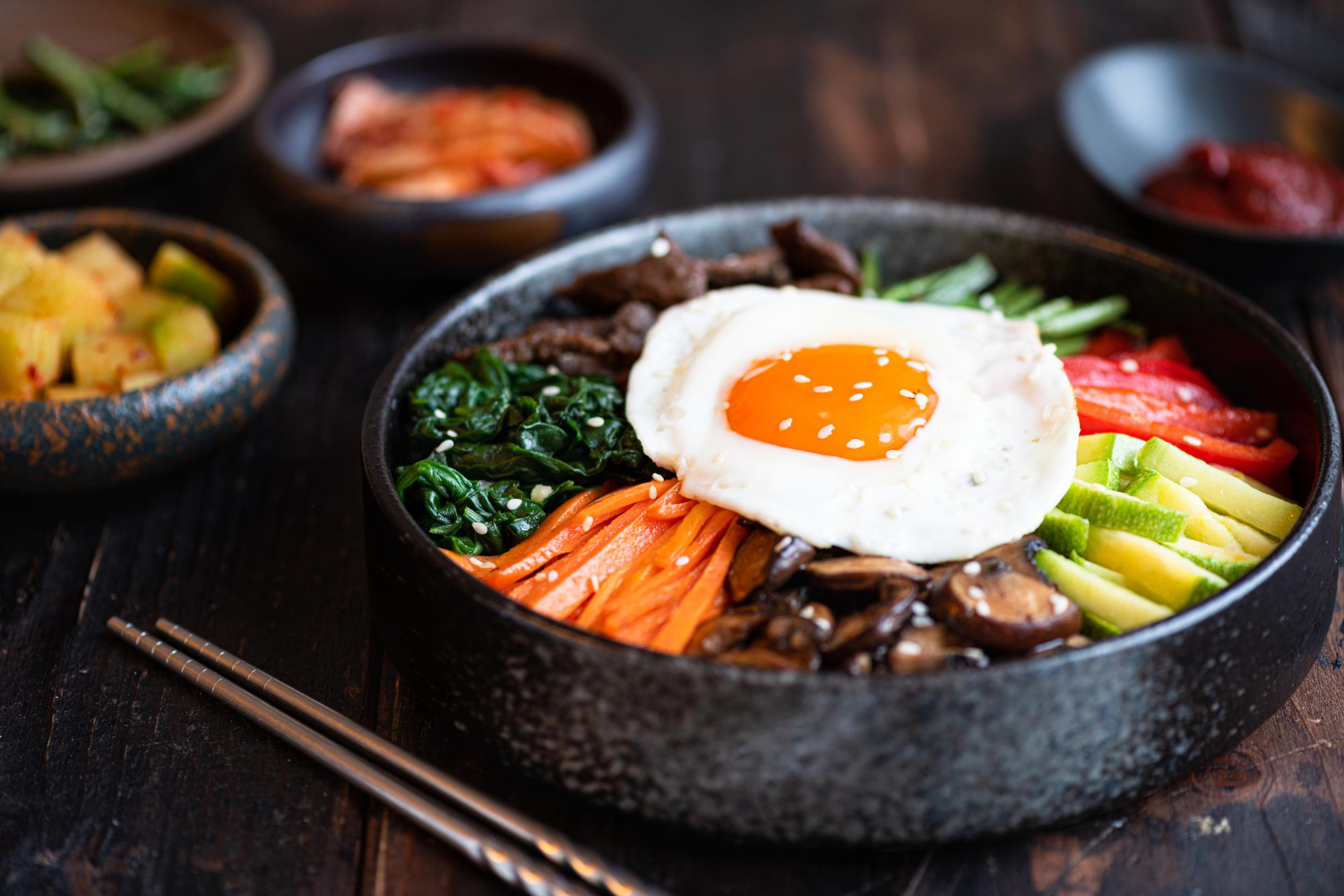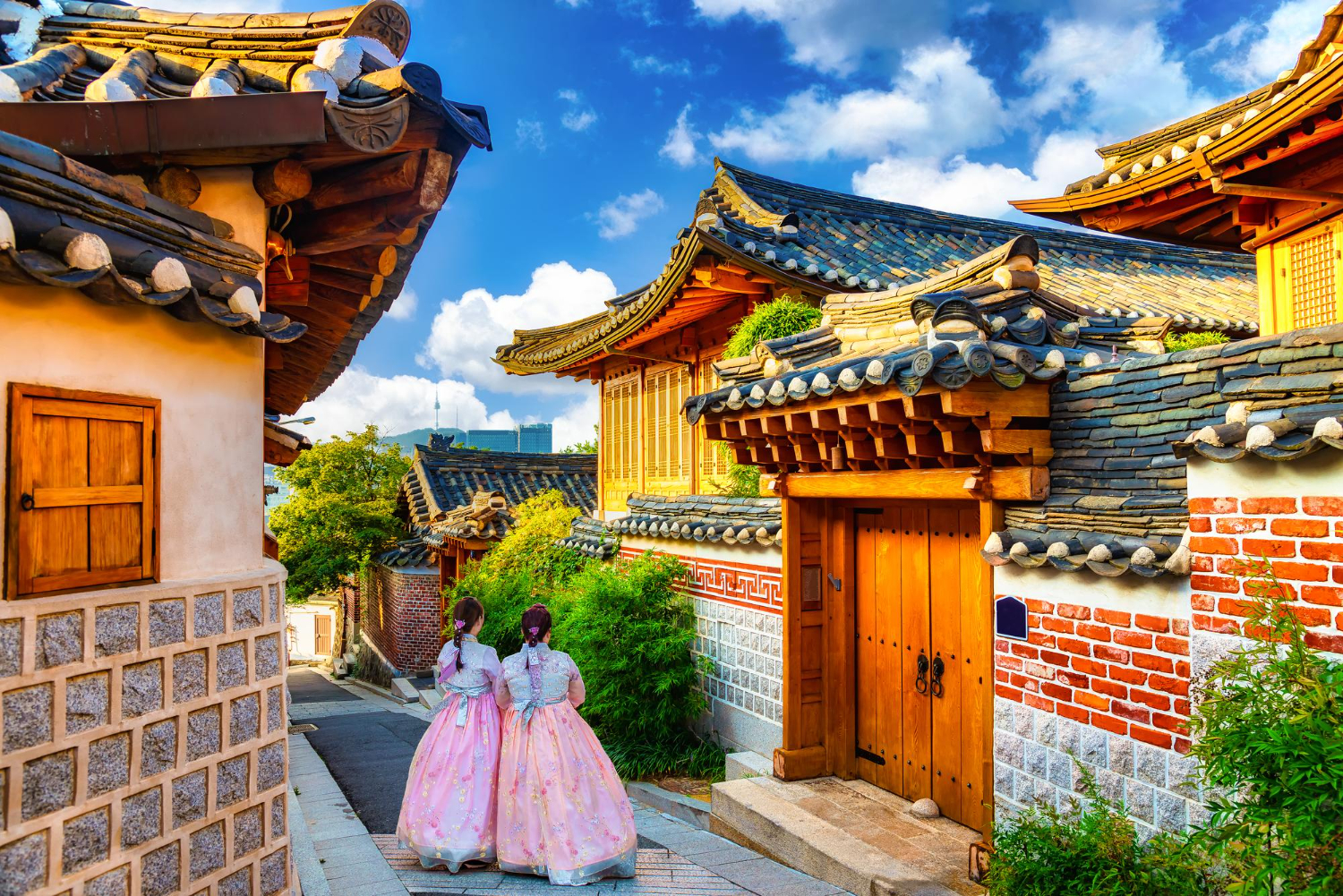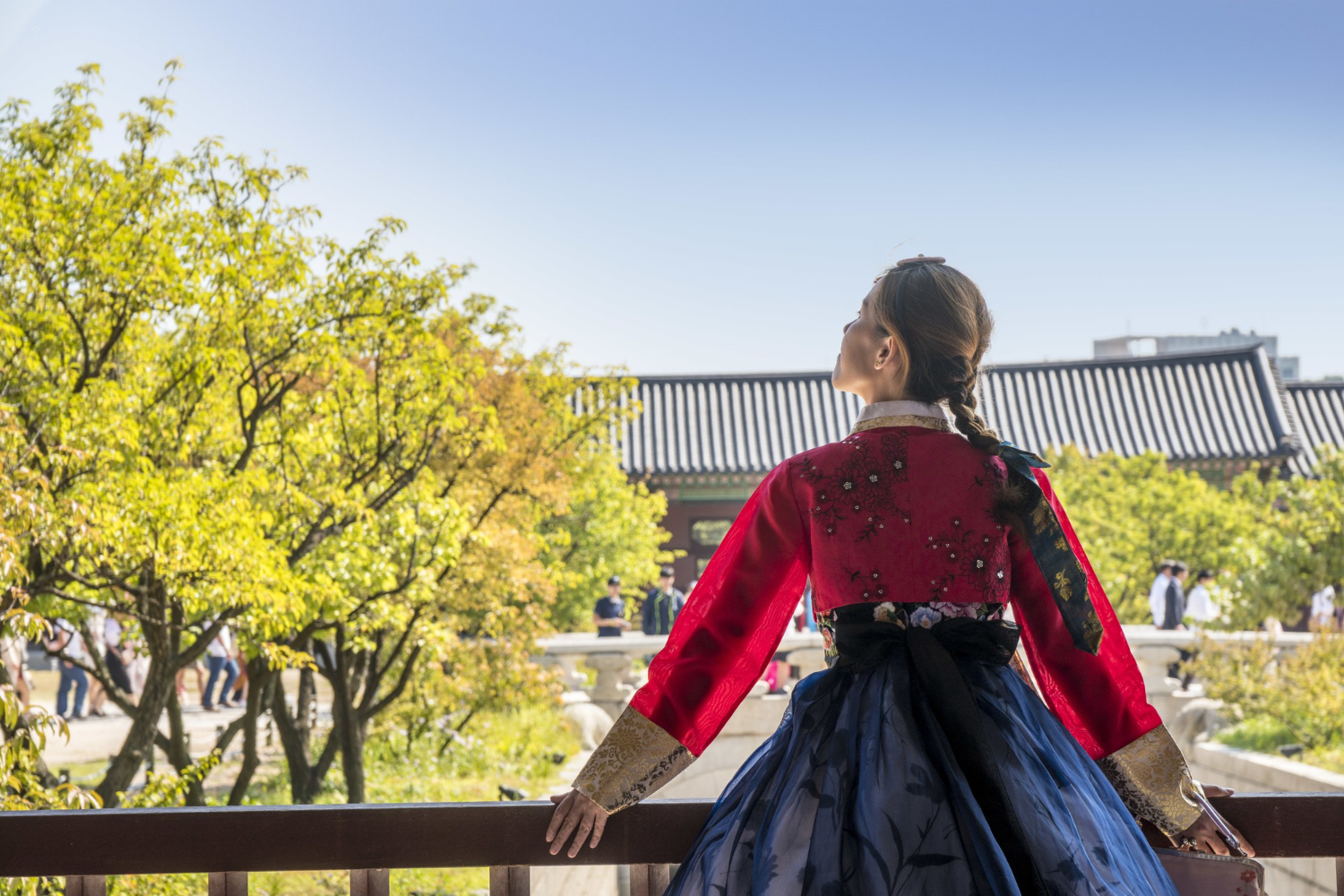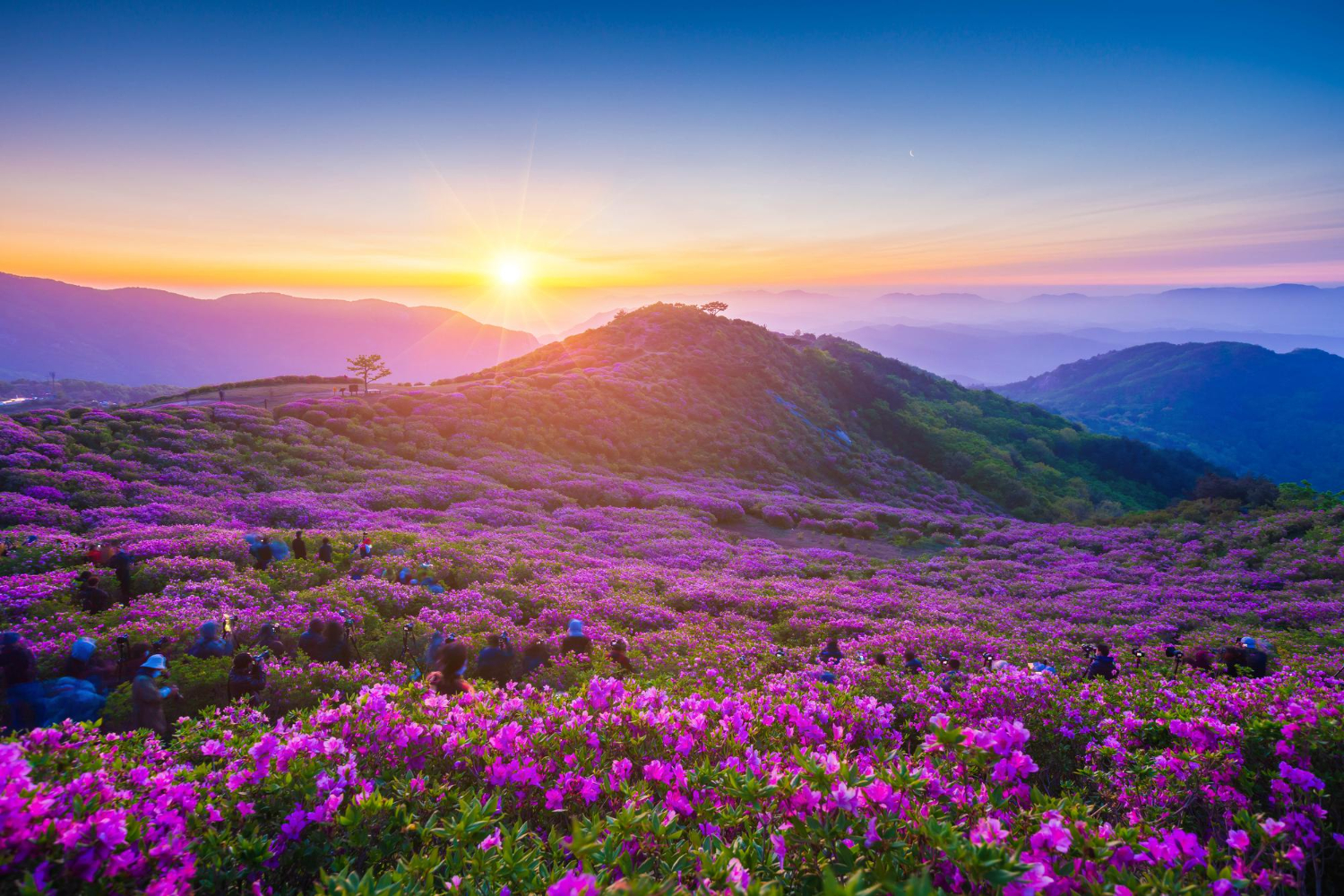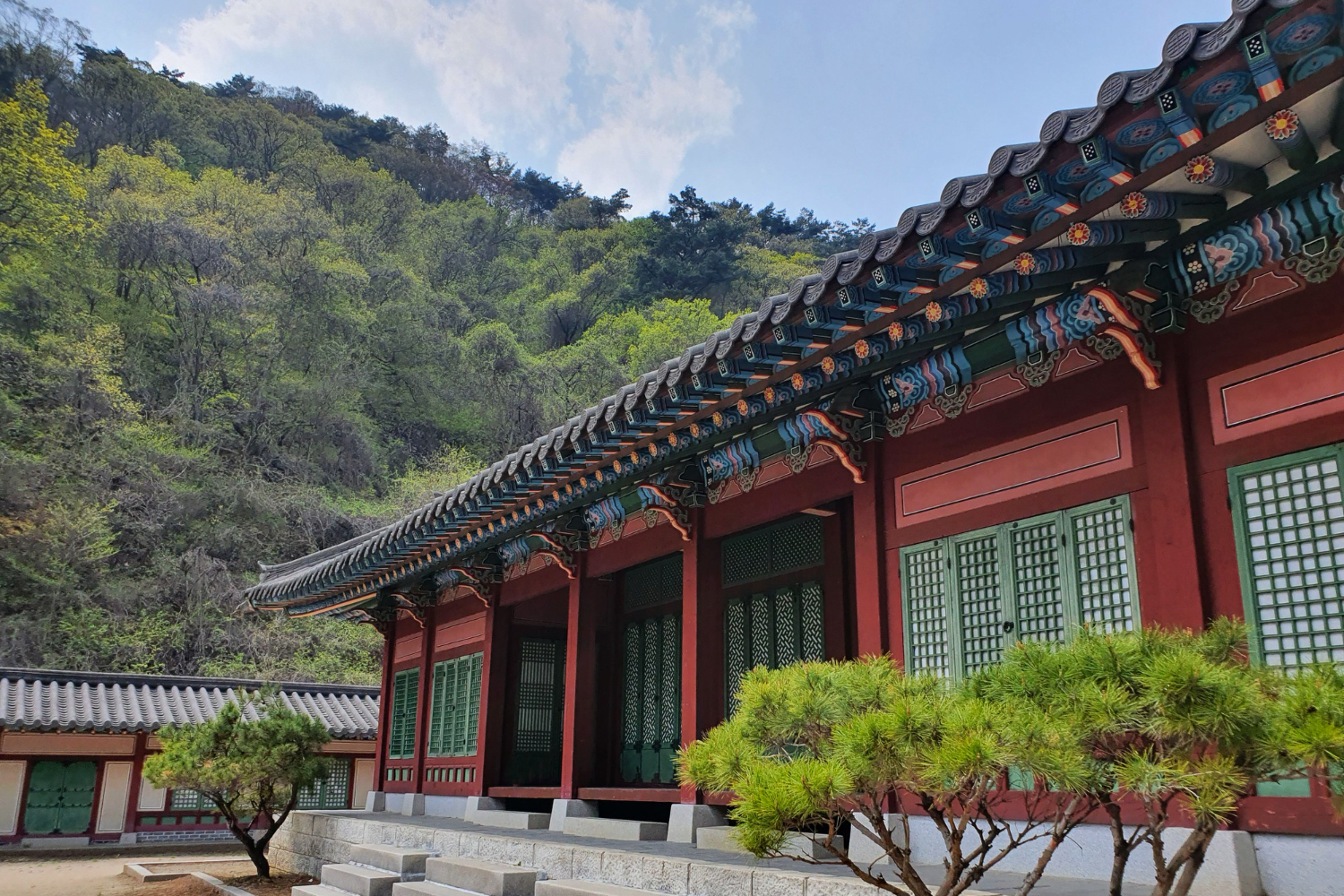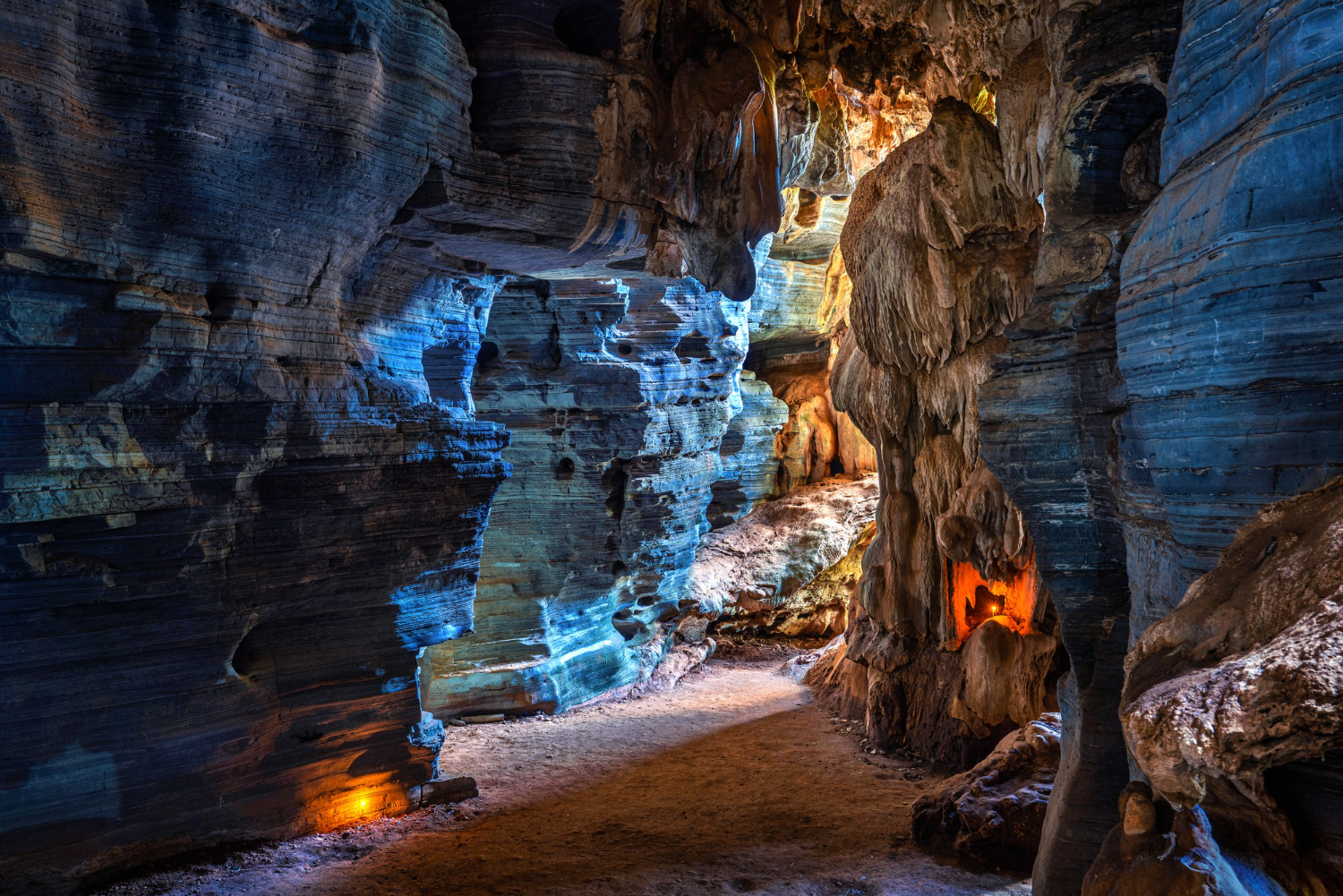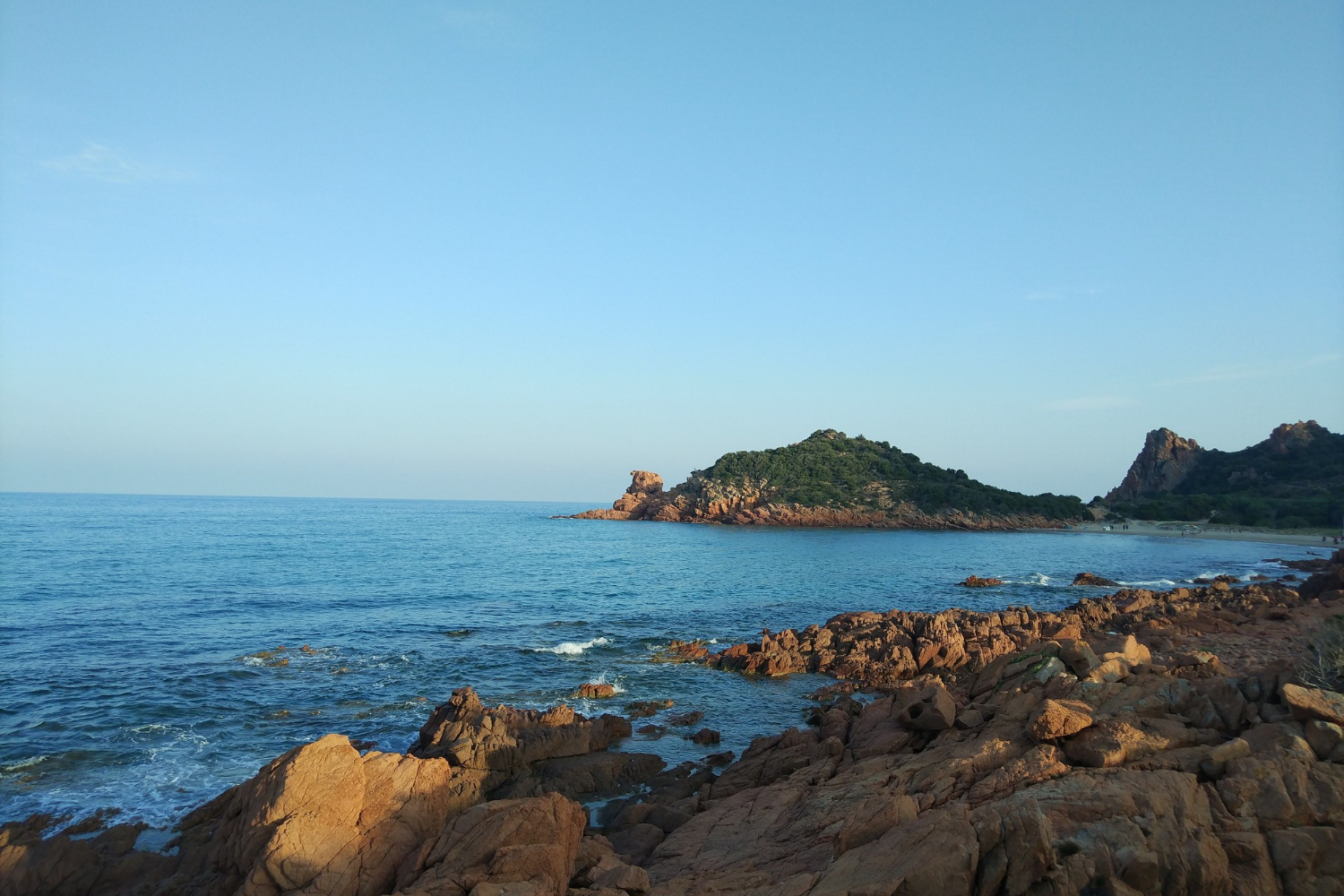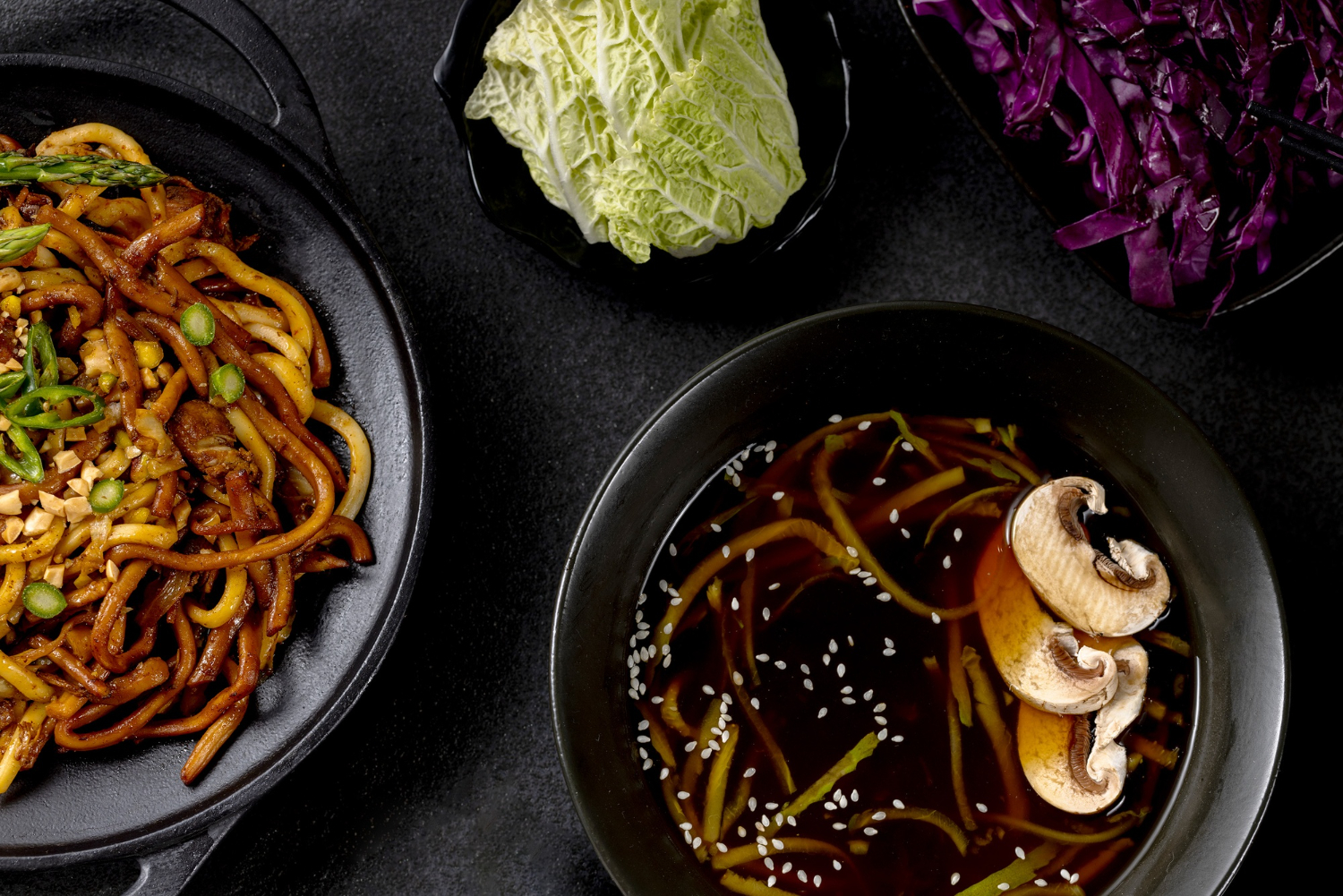Why go?
Listen to the silence of Buddhist temples, cook makguksu noodles at a master class, ride a cable car over the mountains, try on a traditional hanbok in an ancient village, and watch the sunset by the sea in Busan.
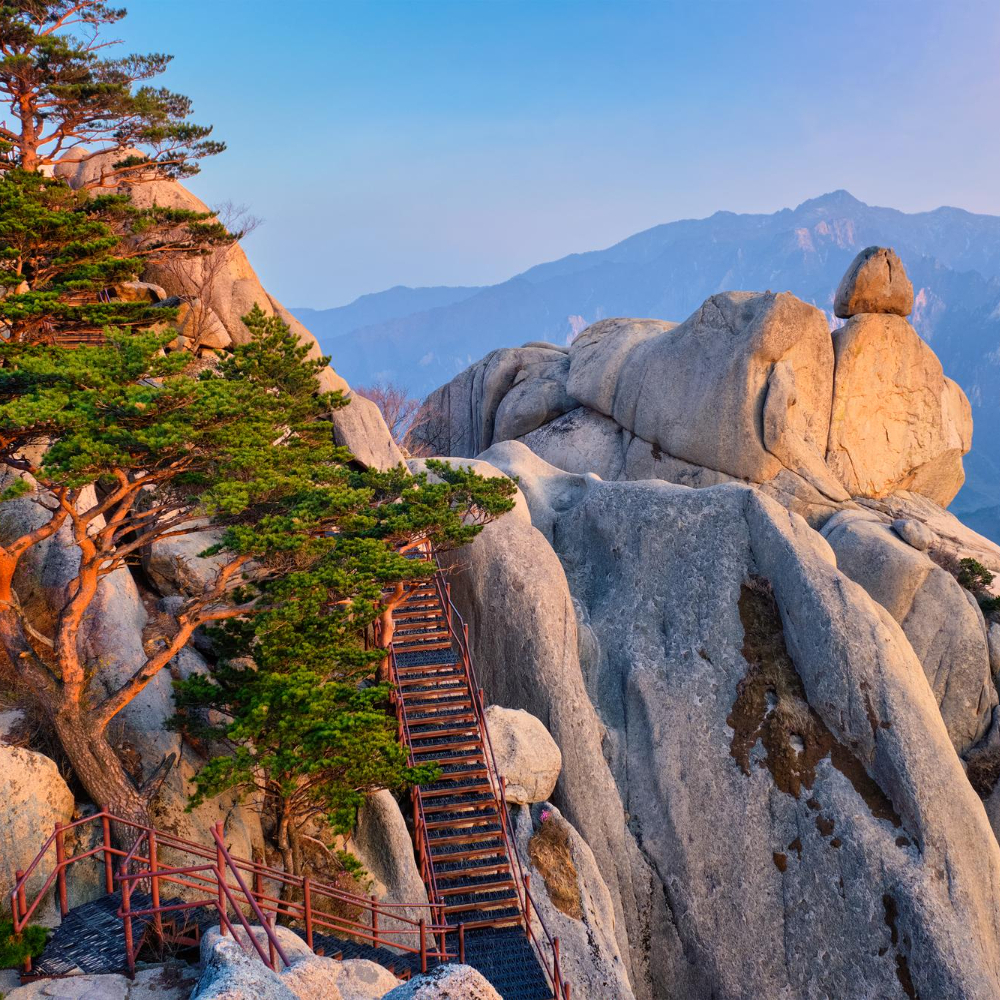
Philosophy of Peace
In Korea, nature and culture coexist in a single rhythm: temples are hidden in the mountains, monasteries are reflected in mirror-like ponds, and national park trails lead to breathtaking panoramas. Traveling through Korea becomes a contemplative experience, where the energy of the East is contrasted by the softness and purity of nature.

Living Traditions
Despite rapid progress, Korea carefully preserves its roots. Ancient villages still resound with masked dramas, artisans pass on the secrets of their crafts, and family recipes are part of the cultural heritage. Here, the past is alive—in the way people communicate, in rituals, in the taste of cold makguksu noodles, and in many small details.
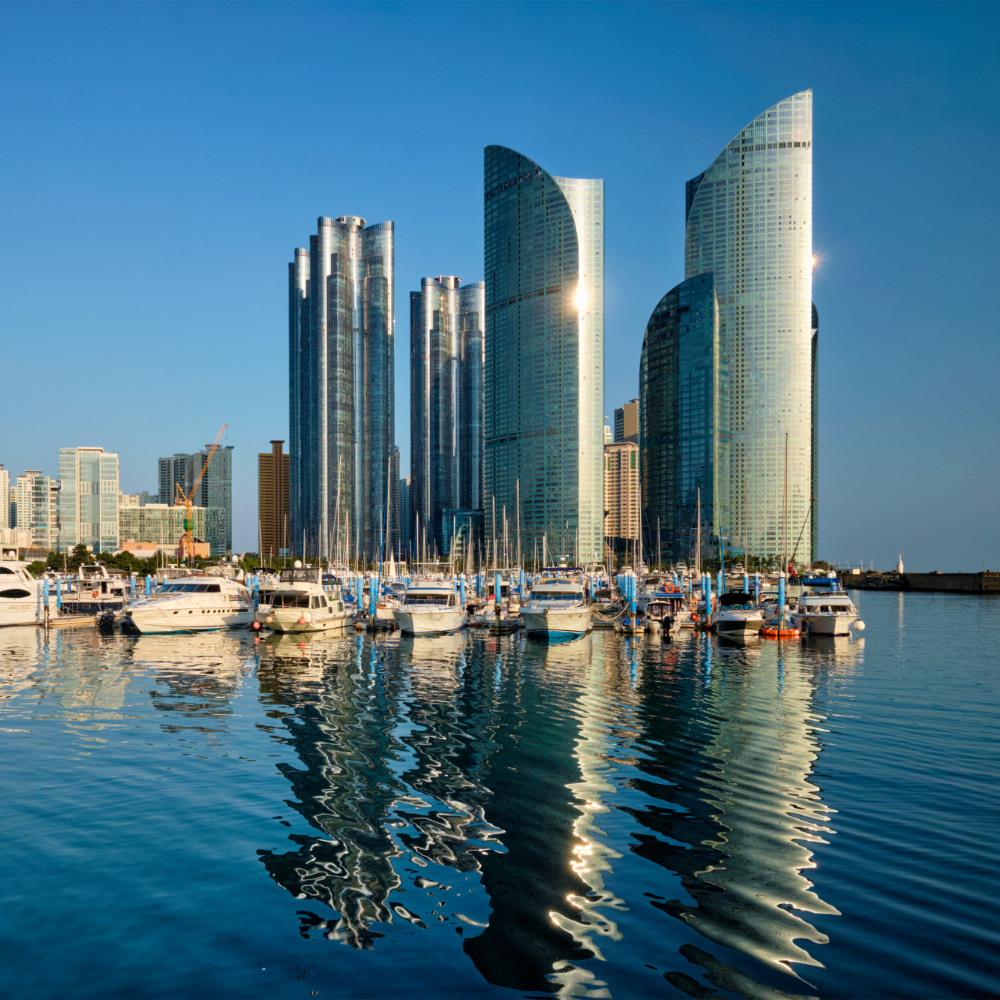
Personal program
Each of our tours is a unique experience. We design a unique program just for you, create a balanced itinerary, organize any activities, and book the best hotels. Our team is with you 24/7: comfortable transfers, a personal guide, and a coordinator who is always available.
South Korea: A Land of Subtle Contrasts and Living Traditions
Traveling through South Korea is an opportunity to see a country where everything is meticulously crafted down to the last detail: rituals, architecture, cuisine, and the relationship with nature. This is an adventure for those who appreciate the meaning in detail and desire to experience the harmony between tradition and progress. Here, the majestic royal palaces of Seoul stand side by side with the tranquility of monasteries, ancient villages tell the story of the Joseon and Goryeo eras, and modern cities captivate with the energy of light and music. We suggest incorporating not only the country's cultural but also its natural gems into your itinerary: the granite peaks of Seoraksan National Park, the landscapes of Jirisan and Gayasan, grottoes and waterfalls, ancient dolmens, and temple complexes listed as UNESCO World Heritage Sites. Every day of your trip will be a discovery—be it a master class in making makguksu buckwheat noodles or a stroll through a garden immersed in the poetry of the Korean spirit.
We create customized programs that allow you to experience Korea in all its layers, with the contrasts that make it unique. For some, this is an opportunity to immerse themselves in history, experiencing centuries-old shrines and Confucian academies. For others, it's a chance to wander through pop-culture-celebrated megacities and savor the flavors of the national cuisine. South Korea amazes with its rhythm, delicacy, and hospitality—travel here becomes an art of contemplation, and we look forward to creating this unique experience for you.
You are just a few steps away from your dream trip!
Tour program of your choice
A tour of the Korean capital
After your arrival in Seoul, we'll ensure your first few hours in the country are relaxing and comfortable: a personal guide will meet you at the airport and escort you to your hotel. We'll allow you time to rest after your flight, so you can recharge before the action-packed program. If you'd like, you can reserve a table in advance for the evening at one of the capital's finest restaurants, so your exploration of Korea begins with its exquisite flavors and cozy atmosphere. And the following day, a sightseeing tour of Seoul awaits you—a vibrant city where the past and the future miraculously coexist.
A stroll through the capital unfolds like a mosaic: majestic architecture, bustling squares, and quiet corners that allow you to truly experience the capital.
We'll definitely stop by the royal palace, Gyeongbokgung, or its elegant neighbor, Changdeokgung, depending on the day of the week. In the city center, we'll stroll along the Cheonggyecheon Stream, a green oasis with bridges and fountains hidden among glass skyscrapers. Other must-see attractions include the bustling Gwanghwamun Square, the Buddhist Jogyesa Temple, and the colorful neighborhoods of Bukcheon and Samcheong-dong, where traditional hanok houses have been preserved. In the Insadong district, you can stop by a teahouse, browse ancient books and scrolls in antique shops, and linger in a gallery. The walk concludes in Myeongdong, where the sparkle of shop windows meets the aromas of street food.
Signiel Seoul 5*, Seoul
This luxurious hotel, located on floors 77-102 of the iconic Lotte World Tower, offers impeccable style in every detail. Rooms boast panoramic views of Seoul and Bukhansan National Park, featuring a blend of Eastern and Western design. The hotel boasts two Michelin-starred restaurants serving Korean and French cuisine. Guests enjoy exclusive services, including helicopter and Rolls-Royce transfers, as well as personal butlers. This is the ideal destination for those seeking luxury and unique experiences.
Nature in Korea: Exploring National Parks
The second day of the journey offers immersion in the tranquility of the mountain landscape. The morning begins among the majestic peaks of Songnisan National Park, where dense forests and bizarre rock formations create an atmosphere of solitude and harmony. One of Korea's most ancient temples, Beopjusa Monastery, is also located here, housing sacred relics and a monumental statue of Maitreya Buddha (33 meters). In the quiet of the monastery courtyards, time slows down, and the architectural details and the scent of pine trees merge to create a singular image of a place where centuries-old traditions are preserved, not forgotten. After the walk, we invite you to a lunch of Korean cuisine—a delicious continuation of a busy morning.
In the afternoon, our road leads to Maisan Provincial Park. The name translates as "Horse Ears," and the unusual rock formations here truly resemble the silhouettes of horses' ears, and are also associated with the duality of yin and yang. Numerous man-made pagodas only reinforce this symbolism. The trail to the park passes under the canopy of cherry trees, which bloom later here than in other regions, turning the walk into a poetic experience. The intimate atmosphere and lack of crowds in Maisan create the feeling of a personal encounter with nature and culture. In the evening, you'll transfer to Suncheon and rest at your hotel, where you'll have free time to finish the day at your leisure.
A walk through the garden and a visit to the unusual dam
The day promises to be filled with tranquility and beauty: the northern outskirts of Seoul hold a living history, the poetry of nature, and artisanal traditions. In the tranquility of the Garden of Morning Calm, nature seems to reveal the various facets of Korea's soul: in spring, the vibrant blossoms, in summer, the soft, dense greenery, in autumn, the fiery iridescence of foliage, and in winter, the fragile purity of snow. The garden's space is designed to evoke rhythm and harmony: flowing lines, the play of light and shadow, a combination of open and secluded corners. Here, time seems to stand still, allowing one to lose oneself in contemplation.
After a stroll through the garden, we'll head to the massive Peace Dam. Here, one can sense the tension and scale of events, where the safety of entire regions depends on engineering solutions. The dam has no reservoir of its own—it was built solely to contain flooding in the event of sabotage or an accident. The final stop of the day will be the Porcelain Museum in Yanggu, a place where centuries-old traditions are transformed into living art. The white clay used to create porcelain for the royal courts still gives birth to refined forms today. In the museum's halls, you can trace the craft's journey from ancient dynasties to the present day, and in the workshop, you can feel part of this continuous history, touching the material that shaped Korean culture.
The Shilla Seoul 5*, Seoul
The Shilla Seoul combines Korean hospitality with international comfort. The hotel offers contemporary-designed rooms, including suites with panoramic city views. Guests can enjoy restaurants serving Korean, French, Japanese, and Chinese cuisine, as well as a lounge bar and bakery. For relaxation and unwinding, guests can enjoy spa treatments, indoor and outdoor pools, a fitness center, and a sculpture park. This is the perfect place for those who appreciate a blend of tradition and modernity.
A trip to the demilitarized zone
This day offers the opportunity to see Korea from different perspectives—historical, political, and natural. The trip begins with a visit to the DMZ (demilitarized zone) museum, which houses documents and exhibits recalling the divided peninsula and the significance of this territory. The museum's atmosphere sets the tone for the rest of the day. The next stop is an observation tower, from where you can peer at North Korea through powerful binoculars. The panoramic view from the tower is not only impressive but also fills the space with a sense of hope that one day the border will disappear. Nearby are the summer houses of Rhee Syngman and Kim Il-sung, two historic residences, each reflecting the character and era of its owner. The contrast in architecture and history of these houses makes them particularly valuable witnesses to the 20th century.
After exploring the historical sites, we return to the lap of nature—to Seoraksan National Park. Here, mountain scenery blends with the harmony of Buddhist temples. A cable car ride offers sweeping panoramas of the East Sea and the town of Sokcho, while a short climb to the ruins of Gwongeumseong Fortress transports you to a world of ancient legends. At the foot of the mountain lies Sineungsa Temple, where a statue of the Unification Buddha stands tall, symbolizing the hope of Koreans for unity. The walk concludes at the Shaking Rock, a gigantic boulder that obediently responds to even the lightest touch. If you wish, you can continue the route and climb to the summit of Ulsan Pawi, which offers one of the most breathtaking views of the entire park.
Ancient temple and traditional village
Today brings together diverse layers of Korean culture—from the strict harmony of Confucian academies to the vibrant traditions of village festivals. Our journey begins at Puseoksa Temple, whose history dates back to the 7th century. Legend has it that a "floating stone" fell here on the mountain slopes, a gift from heaven as a sign of the power of the monk Uisang's teachings. To this day, this stone is kept near the temple walls, as if confirming the legend. Puseoksa is striking in its combination of austere simplicity and subtle beauty: the ancient Muryang Sujeong pavilion with its graceful Buddha statue reflects the grandeur of the Goryeo era.
Next, we'll visit Sosu Seowon, Korea's first officially recognized Confucian academy. Founded in the 16th century, it became a symbol of Joseon ideology, nurturing generations of scholars and thinkers. After lunch, the road leads to Hahoe Village, a UNESCO World Heritage Site. Here, the tiled roofs of aristocratic homes rub shoulders with peasant huts, and the streets stretch along the curves of the Nakdong River. Hahoe is famous for its masks and the "Talchum" dance, which explores human nature with humor and irony. We can arrange a visit to this performance upon request. We can also visit a traditional Korean paper factory called "hanji," Chuwangsan National Park—the filming location for "Spring, Summer, Fall, Winter & Spring"—and Dragon Tail Waterfall. We can tailor the program to your preferences, including accommodations—either in a luxury city hotel or an authentic traditional home.
Immersion in Korean History
The city of Gyeongju is called an open-air museum—every hill, stone, and temple here bears traces of the ancient Silla kingdom. This is the country's only historical national park. A walk through its green spaces and temple complexes is a journey through time. We'll climb a winding serpentine road to Mount Tohamsan, where the sacred Seokguram Grotto is hidden in the silence of the mountain forest. Stone paths lead to a Buddha statue that seems to float in the grotto's semi-darkness. From here, we can descend to Bulguksa, the main Buddhist temple of the Silla era, where the rhythm of ancient prayers still resounds. On the plain, we'll see Cheomseongdae, a stone tower where stargazing took place a thousand years ago, and enter the Heavenly Horse Mound to observe the structure of ancient tombs.
Gyeongju and its surroundings are known for their striking contrasts: ancient structures stand alongside manicured gardens and the mirror-like surface of Wolji Pond, reflecting the pavilions of the Eastern Palace. It's easy to sense the tranquility and grandeur here—a glimpse of a country where culture and nature have always coexisted in harmony. After lunch at one of the traditional restaurants, our journey continues—the drive to Busan takes about an hour and a half, leaving behind a sense of tranquility and connection to the very essence of Korean history.
Signiel Busan 5*, Busan
Located in the heart of Busan, in the LCT Tower, Signiel Busan offers refined comfort with panoramic views of Haeundae Beach and Gwangan Bridge. The hotel boasts two restaurants, including the Chinese Chao Lan, serving both traditional dishes and modern interpretations. Guests can enjoy spa treatments, an infinity pool overlooking the sea, and an outdoor children's garden. It's the perfect place for families and those who appreciate sophisticated style and impeccable service.
Busan is a resort metropolis
Busan is a city where the sea sets the pace of life. You'll visit iconic spots like the Diamond Bridge and the bustling Jagalchi Market, where an endless gallery of smells, colors, and voices stretches along the seafood stalls. At the market, street cafes prepare octopus and scallop dishes, which you can sample if you wish, immersing yourself in the simple and vibrant life. You'll also visit one of Busan's most unique neighborhoods—the Gamcheon Cultural Village, resembling a colorful labyrinth. Its houses, decorated with vibrant graffiti, staircases, and courtyards resemble an open-air art installation. Artists and musicians live on the hills, and each wall has its own story.
Around midday, the city unfolds before you from above: the Songdo Cable Car passes directly over the sea, offering panoramic views of the coastline. From the observation deck of the Lotte Department Store—the very same one listed in the Guinness Book of World Records—you can see the entire center and the Diamond Bridge, sparkling over the bay. During the day, you can dine at one of the restaurants overlooking the water, and in the evening, head to Haeundae Beach and Camellia Island, the site of the APEC summit. Here, by the sea, Busan is no longer noisy and busy, but soft, almost resort-like: the sun sets over the horizon, reflecting off the glass of skyscrapers, and the city seems endless.
An ancient fortress and ancient dolmens
The morning begins in Jinju, an ancient fortress on the banks of the Namgang River. Key events of the Imjin War, when the Joseon army confronted the Japanese, unfolded within its stone walls. We'll stroll along the fortifications, visit the Jinju National Museum, which houses weapons, armor, and records of those battles, and from the fortress hill, overlook the river that witnessed two great battles. The fortress's space is strikingly picturesque: old gates, towers, and ancient trees create an atmosphere of quiet dignity, where history is especially poignant.
After a traditional Korean lunch, we'll visit Nagan Eupseong, a village within the fortress walls. Thatched roofs, narrow streets, and centuries-old shrines beneath a sacred tree have been preserved here, and the residents maintain traditions dating back over six hundred years. Next, we'll head to Hwasun County to see the dolmens, a UNESCO World Heritage Site. We'll stroll through a four-kilometer-long valley lined with ancient megaliths, explore a Bronze Age quarry, and hear the legend of the giantess grandmother—which, by the way, isn't the name of one of the dolmens! The day will end in Jeonju, where we'll spend the night in a hanok, a traditional Korean house with heated floors. This isn't just a vacation; it's an opportunity to experience the atmosphere of old Korea from the inside.
Grand Josun Busan 5*, Busan
Situated 200 meters from the famous Haeundae Beach, this hotel combines modern elegance and comfort. Rooms with floor-to-ceiling windows and parquet floors create an atmosphere of coziness and luxury. The hotel offers a variety of restaurants, including Chinese cuisine, as well as a private lounge bar for evening cocktails. Guests have access to indoor and outdoor pools, spa treatments, a fitness center, and a sauna. This location is ideal for those seeking a combination of beach relaxation and city comfort.
Jeonju is the birthplace of the royal clan.
Jeonju is another city significant to Korean history. It's called the "perfect place," and it seems well-deserved. The Yi clan, the royal Joseon dynasty that ruled Korea for over five hundred years, originated here. We'll ascend to the Omokdae Pavilion, from where General Yi Seong-gye once looked out over the valley after defeating Japanese pirates, and see the Imokdae Pear Stele, a symbolic site that bears an inscription made by Emperor Gojong in 1900. Nearby is the Chaman graffiti district, where walls are covered with Korean and Japanese characters, calligraphy, and scenes from manhwa. It's a striking blend of historical memory and contemporary art that permeates the entire city.
In the center of Jeonju, we'll visit the Catholic cathedral, built on the site of the executions of the first Christians, and the Gyeonggijeon Shrine, an architectural complex housing the portrait of Yi Seonggye. Ancient archives and ritual buildings, depicting the dynasty's traditions, are also located here. A stroll through the hanok district is the perfect end to the day: ancient tiled houses, manicured courtyards, and artisan shops create a sense of Korea's "old capital." On the streets, you'll encounter locals and tourists wearing traditional hanboks—in Jeonju, people love to embrace the past to better understand the present.
A day in Jirisan and Gayasan National Parks
Today's adventure begins among the misty slopes of Jirisan, the first sacred mountains designated a national park in South Korea. Here, the peaks disappear into the clouds, while beneath them, turbulent streams murmur and ancient cedars rustle. We'll ascend to one of the observation decks, offering panoramic views of the "Heavenly King's Peak" and the green valleys where tea and medicinal herbs have been harvested for centuries. Along the way, we'll visit Surak Waterfall, sparkling in the sun, and the Ssangyesa Buddhist Monastery, founded in the 8th century by the disciples of Master Uisan. Legend has it that a tiger, the spirit of the mountains, indicated the site for the temple. After the walk, you'll take a short drive to the historic Hwagye Jangto Market, where you can sample aromatic green tea and dishes made with local vegetables and beans, typical of the southern provinces.
In the afternoon, the route continues through Gayasan National Park. Hidden among the dense forests is Haeinsa Temple, one of the most important sanctuaries of Korean Buddhism. Founded in the 9th century, it is famous for housing the Tripitaka Koreana—more than 80,000 wooden tablets carved with sacred texts, recognized as a masterpiece of world culture and protected by UNESCO. The grandeur of this place is felt in every detail: the scent of cedar, the flickering candles, the carved gates leading to the Daejokgwangjeon Hall, dedicated to the Buddha Vairocana. After a contemplative stroll through the temple complex, you'll have a free evening to relax. As always, we're ready to help you organize any leisure activity—reserving a table at the best restaurant or buying tickets to an event of interest.
A Trip to Hwanseonggul Cave and Haesindang Park
This day is dedicated to the most unusual corners of Korea's east coast. First, a journey to the Taebaek Mountains, home to the country's largest karst cave, Hwanseonggul. Here, hidden within the rock, nature has created an entire underground world: chambers up to twenty meters high, columns of stalactites and stalagmites sparkling in the lamplight, underground rivers and lakes. Only a portion of the six-kilometer cave is open to the public, but it's enough to make you feel like you're in a fairytale "palace of the mountain king." The air is cool and humid, and the silence is broken only by the drip of water falling from the centuries-old vaults. After the walk, lunch will be served at one of the local restaurants, serving dishes featuring freshwater fish and mountain herbs.
The tour then continues along the seashore to Haesindang Park, famous for its collection of wooden and bronze phallic sculptures. A hill covered with pine trees offers views of the coastal village and the waves crashing against the rocks. According to local legend, a girl once drowned here, her spirit angry at the fishermen, and only after the installation of the phallic sculptures did the sea become bountiful again. Today, this park is more than just a curiosity, but a picturesque place where myths, humor, and tradition are intertwined. The day ends with a drive toward the national park, accompanied by the sound of the surf and the feeling that Korea knows how to surprise even the most seasoned travelers.
A culinary master class and a walk through a mountain park
On our way to Seoraksan National Park, our route takes us through the city of Chuncheon, where we'll take a masterclass in making traditional cold buckwheat noodles called makguksu. In the cozy kitchen of a small restaurant, you'll learn how to roll out the dough, cut the noodles, and choose a sauce—a mildly spicy one or a salty soy sauce-based one. Cooking immediately turns into a meal: the aroma of fresh homemade noodles and the harmony of sauces will leave a lasting impression of Korean cuisine, while the light, traditional spirit and friendly atmosphere make this moment especially warm.
Next, we'll visit Seoraksan National Park, whose name translates as "Snow Peaks." A UNESCO World Heritage Site, the park is stunning in its scale and the beauty of its landscapes. We'll take a cable car almost to the summit of one of the peaks, where the ruins of Gwongeumseong Fortress remain, and from the observation deck, a panoramic view opens up of the East Sea and the resort town of Sokcho. The itinerary includes a visit to Sinheungsa Temple, home to a majestic statue of the Unification Buddha, and a hike to the famous "Swinging Rock," which can be moved with a single touch. If you'd like, we can organize a trek to the summit of Ulsan Pawi Mountain. The program concludes after lunch. Optionally, we can finish the day at the Waterpia hot springs water park.
Choose the right format
Ready program or individual adventure?
Getting to Know Korea Most Popular
from $ 2,700/person.
from 7 days / Cost for the composition of participants 4 ENTs.- Three capitals: Seoul - Busan - Gyeongju;
- Sightseeing tours in 3 capitals;
- Seoul Sky at Lotte World Tower;
- Shopping at Dongdaemun Market and Gangnam area;
- Visit Gwangjang Market;
- Accommodation in 4* -5* hotels with breakfast and lunch on excursions;
- Individual transfers in business class cars;
- Accompaniment by a Russian-speaking guide;
- Entrance tickets for all excursion facilities;
- All taxes and touristborns;
Exclusive VIP Tour Most Popular
from 6,500 $/person.
from 8 days / cost for the composition of participants 4 ENTs.- Travel route: Seoul - Gapyeong - Sokcho - Andong - Gyeongju - Busan;
- Seoul City Tour, Namiseom Island Visit, Seoraksan National Park, Gyeongju City Tour, Gyeongju Seokguram Granite Grotto, Haedongyeonggungsa Temple, Haundae Beach, Gwangan Bridge, Gamcheon Cultural Village, Jagalchi Fish Market, Myeongdong Shopping, Dongdaemun Design Plaza Shopping, Hongdae Area;
- Helicopter or yacht cruise in the waters of Seoul;
- Accommodation in 5* hotels with breakfast and lunch during excursions;
- Individual transfers for cars V class;
- Accompaniment by a Russian-speaking guide;
- Entrance tickets for all excursion facilities;
- All taxes and touristborns;
Great journey Most Popular
from 4,900 $/person.
from 10 days / cost for the composition of participants 4 ENTs.- Travel route: Seoul - Suwon - Nonsan - Jeonju - Jinan - Yeosu - Busan - Gyeongju;
- Seoul City Tour with Historic Center Visit, Hwaseong Fortress, Sunshine Studio, Hanok Village, Maisan Provincial Park, Odong Island, Marine Cable Car, Suncheon National Park Visit, Busan City Tour, Gyeongju City Tour, Seoul Sky at Lotte World Tower, Shopping at Dongdaemun Design Plaza;
- Accommodation in 4* -5* hotels with breakfast and lunch on excursions;
- Individual transfers to auto V class;
- Accompaniment by a Russian-speaking guide;
- Entrance tickets for all excursion facilities;
- All taxes and touristborns;




